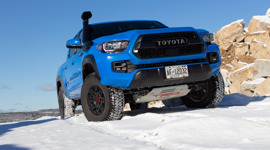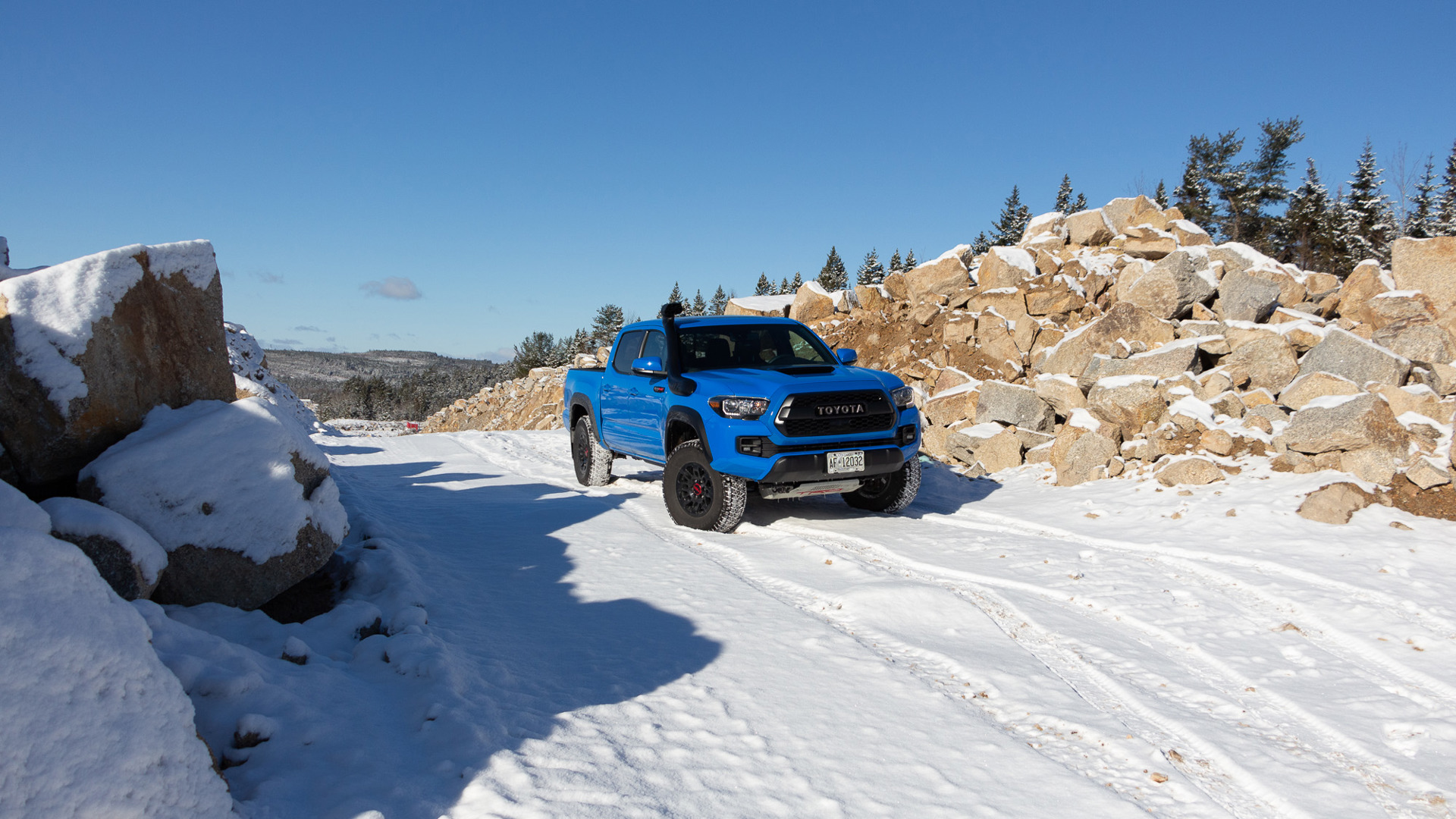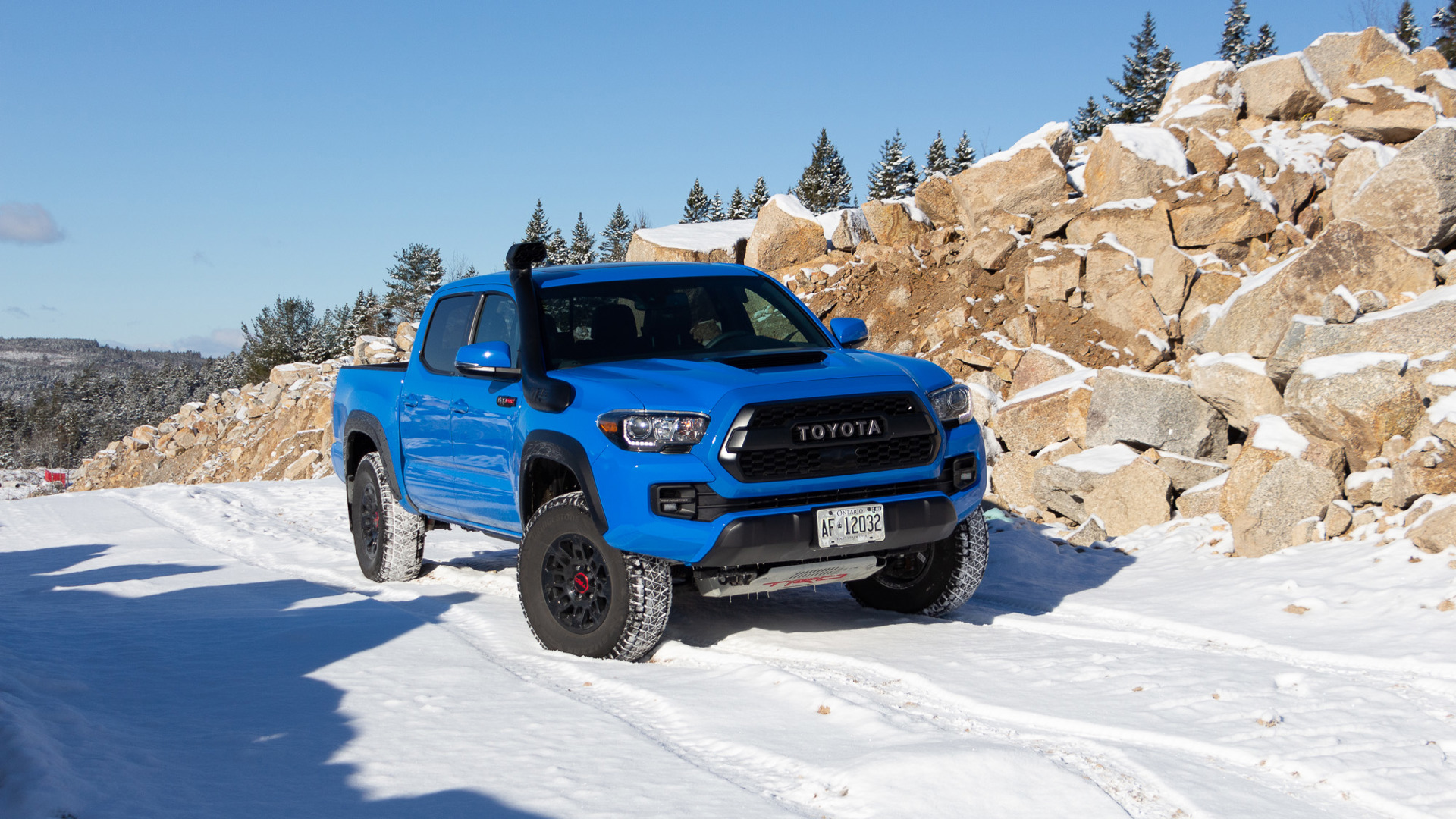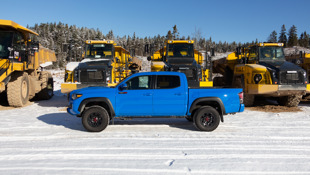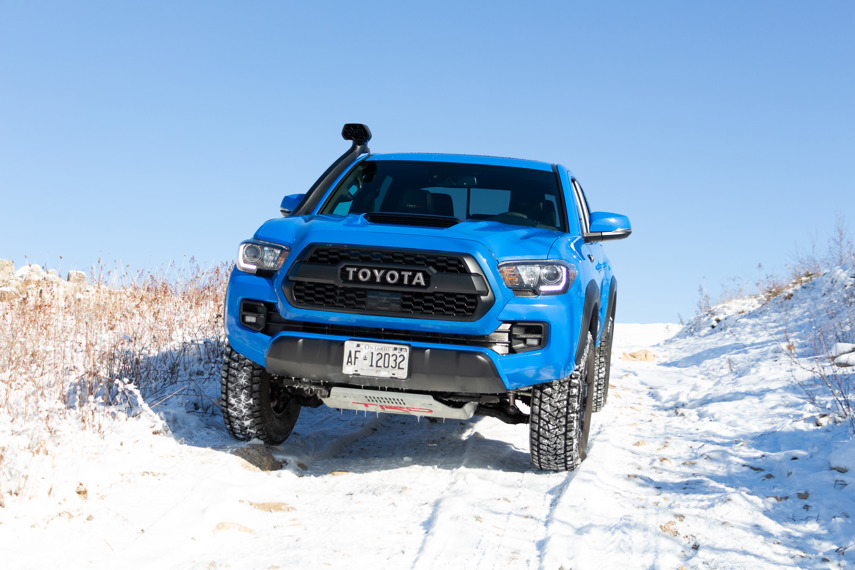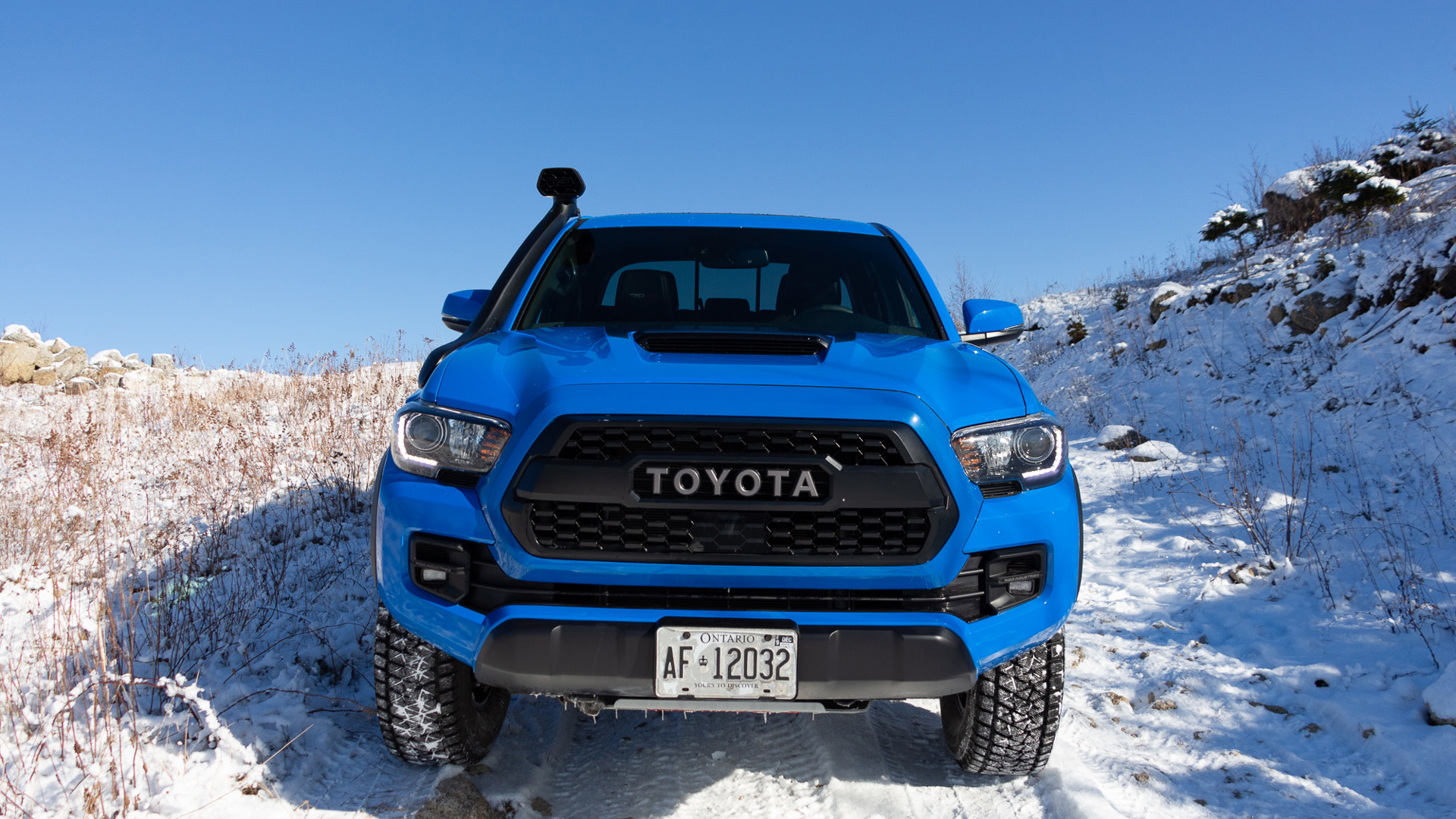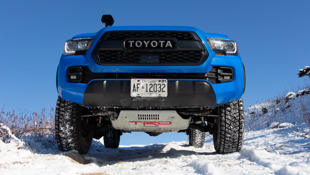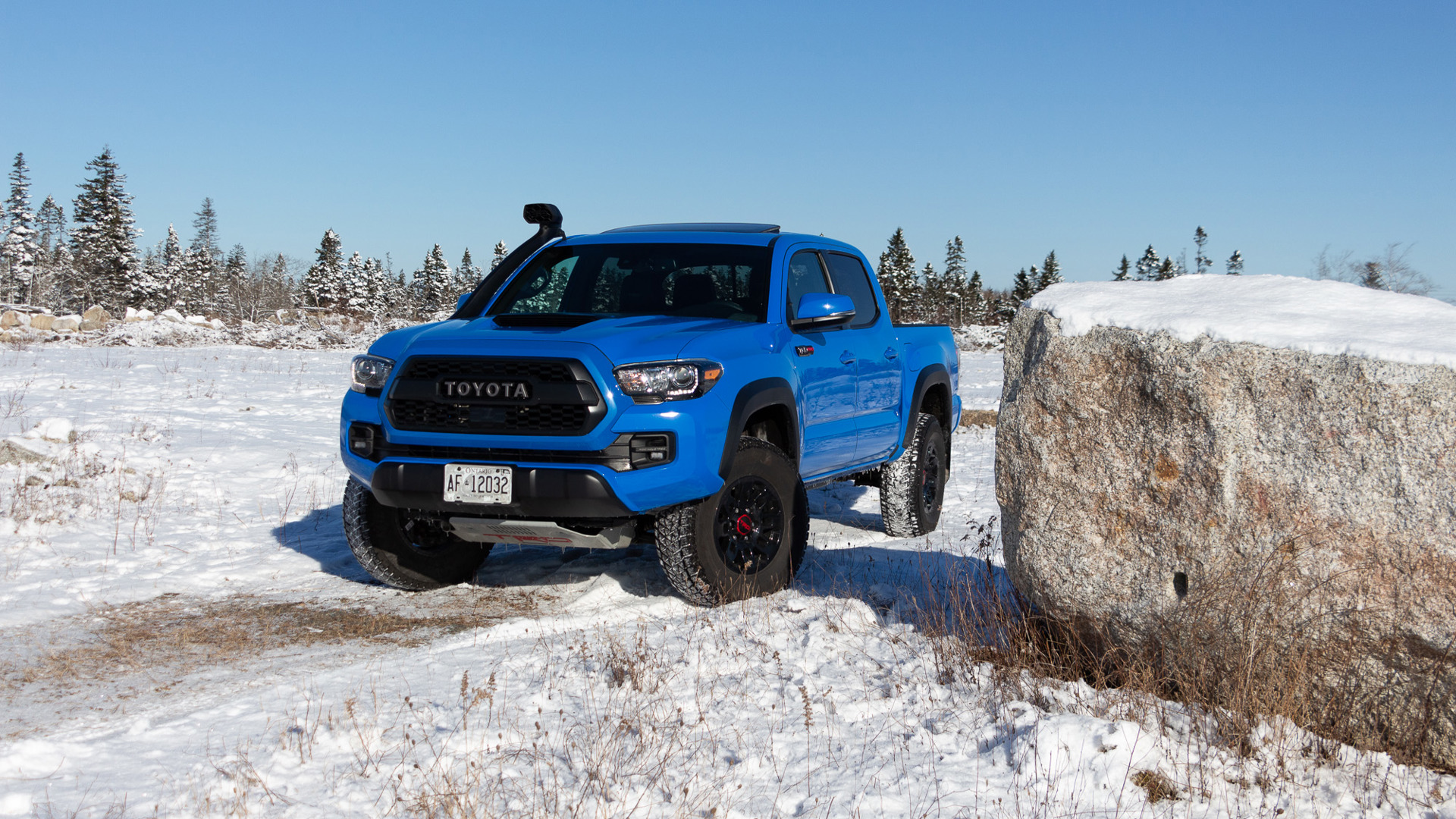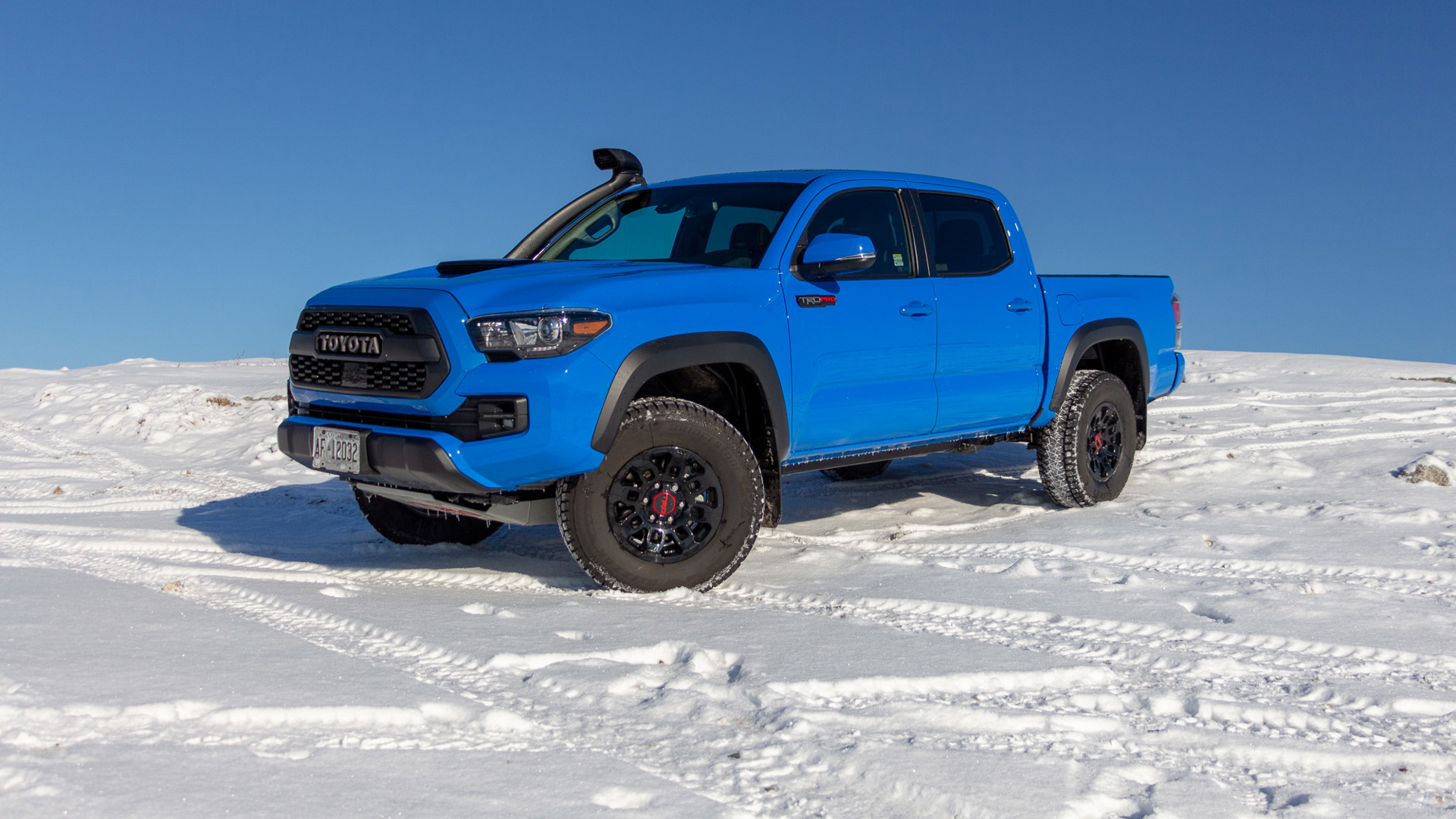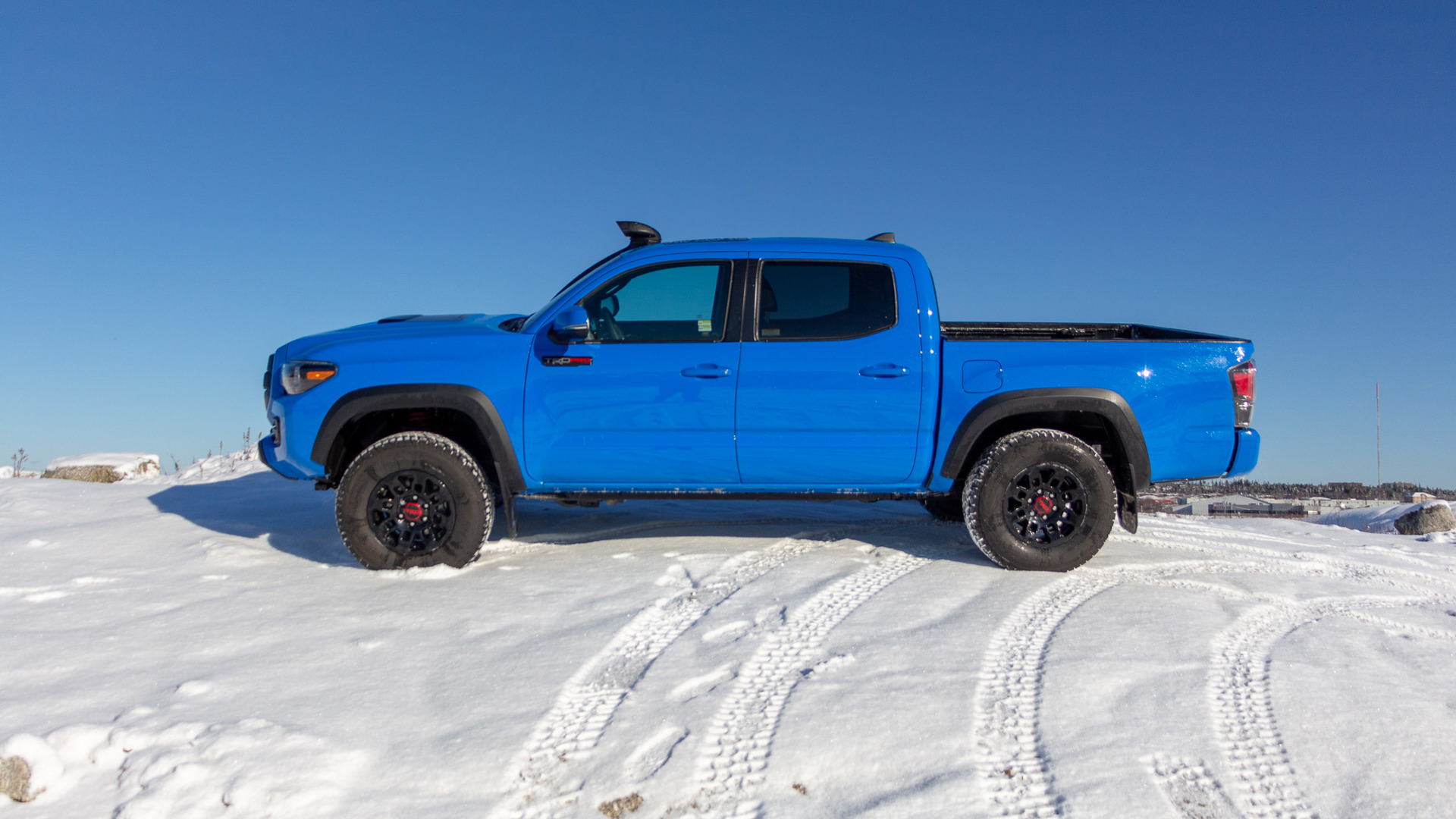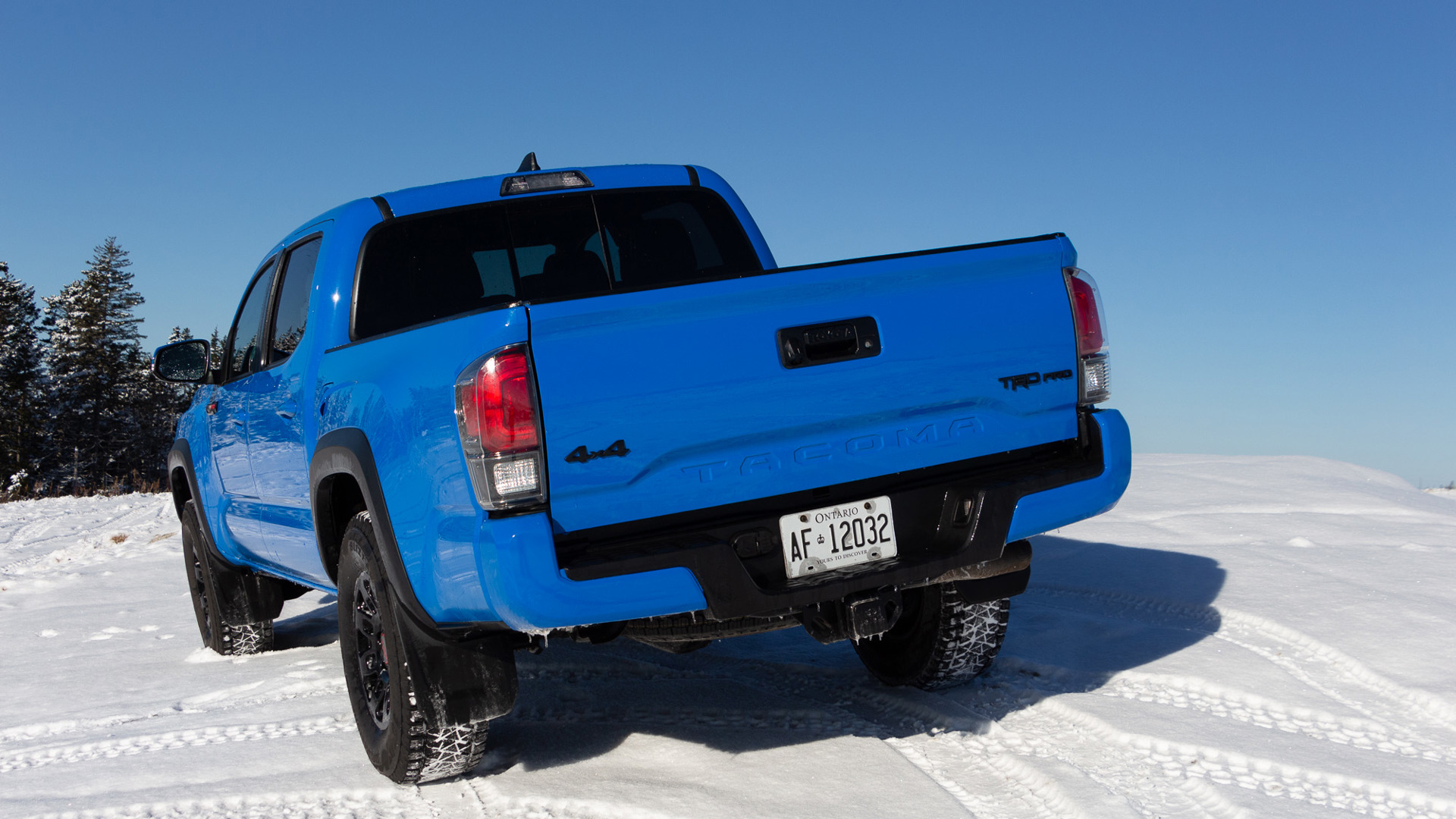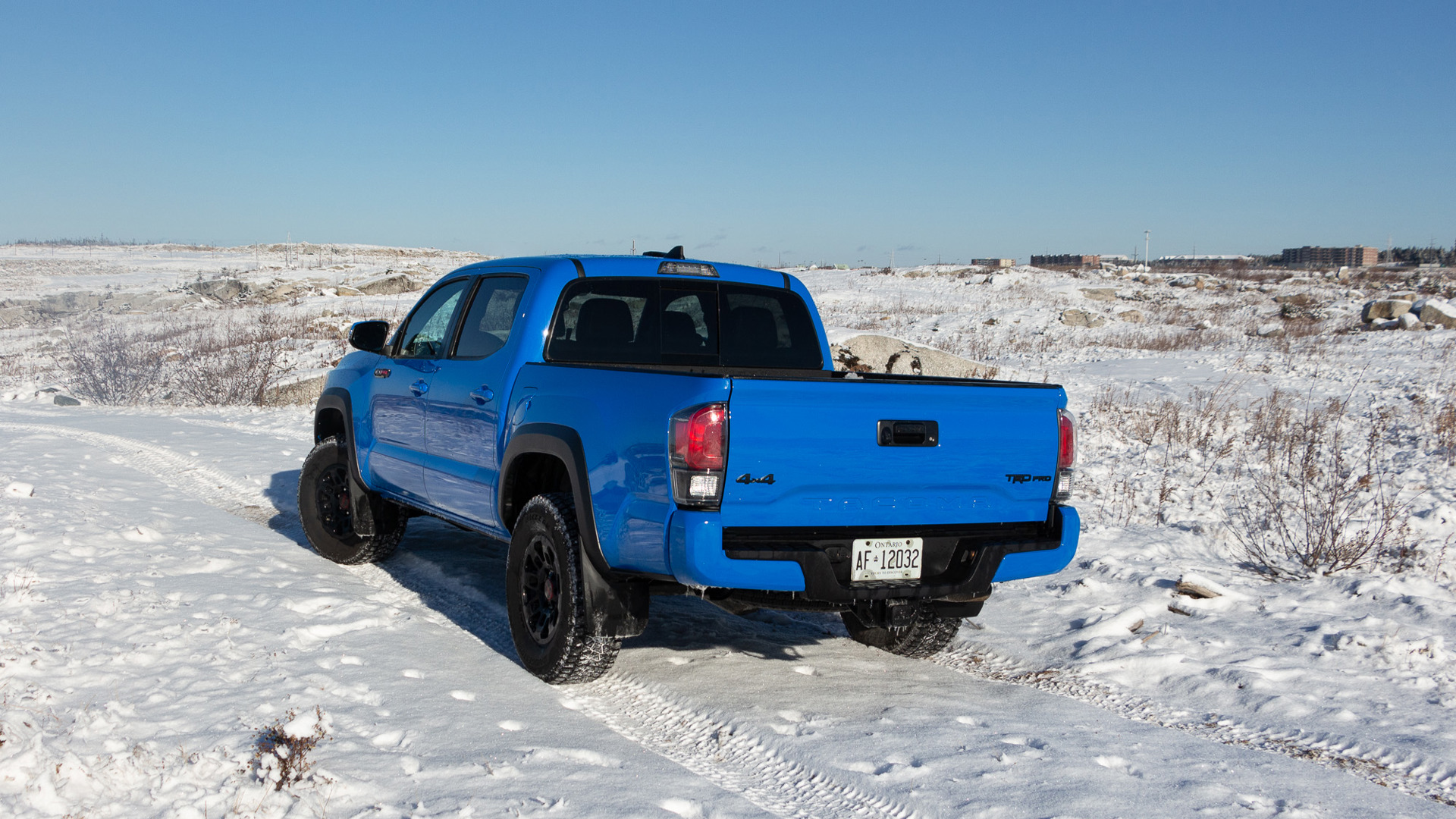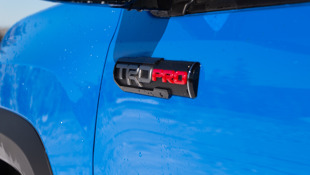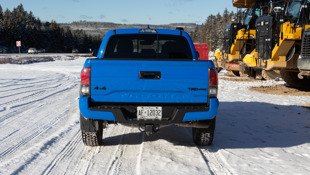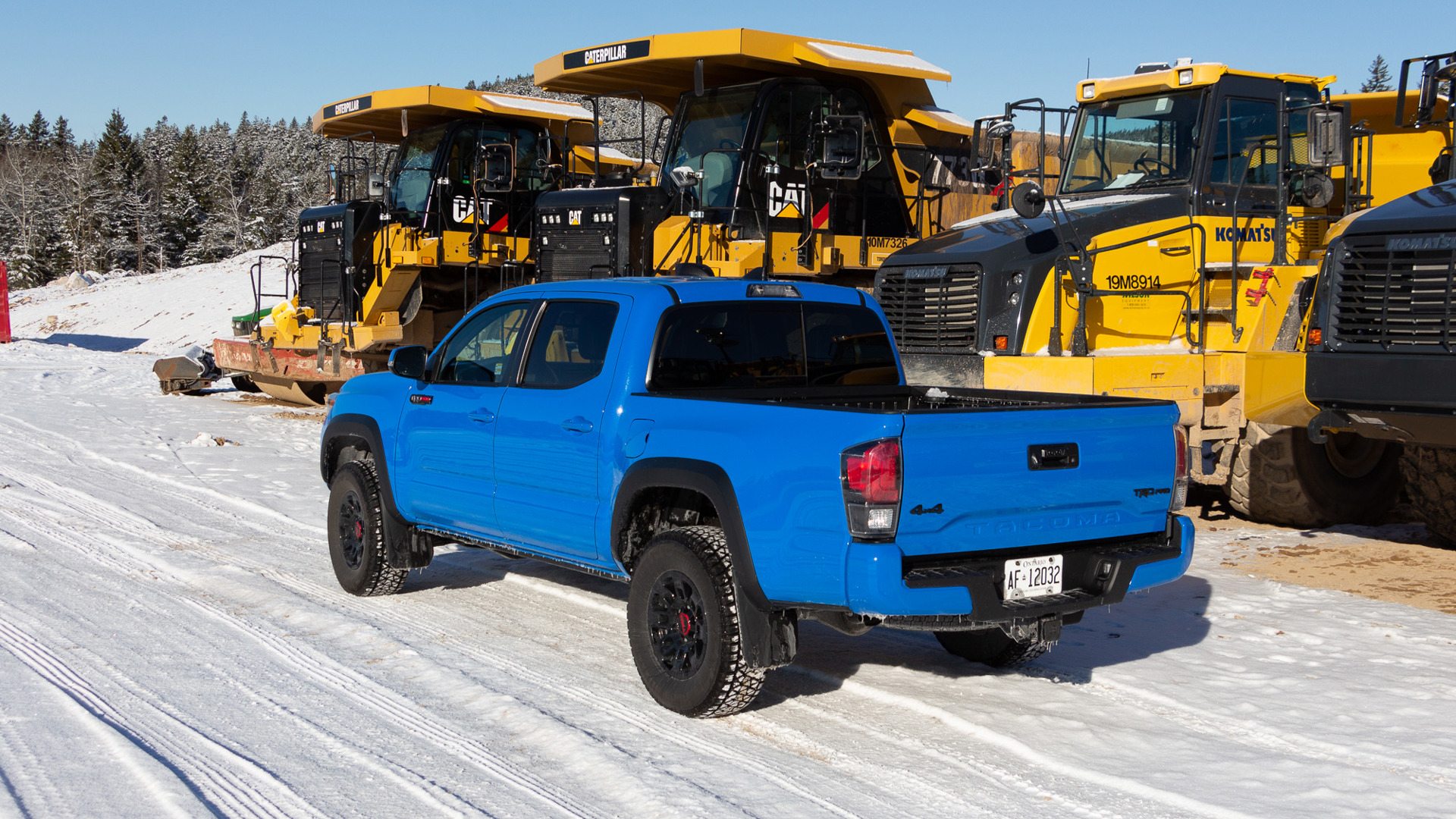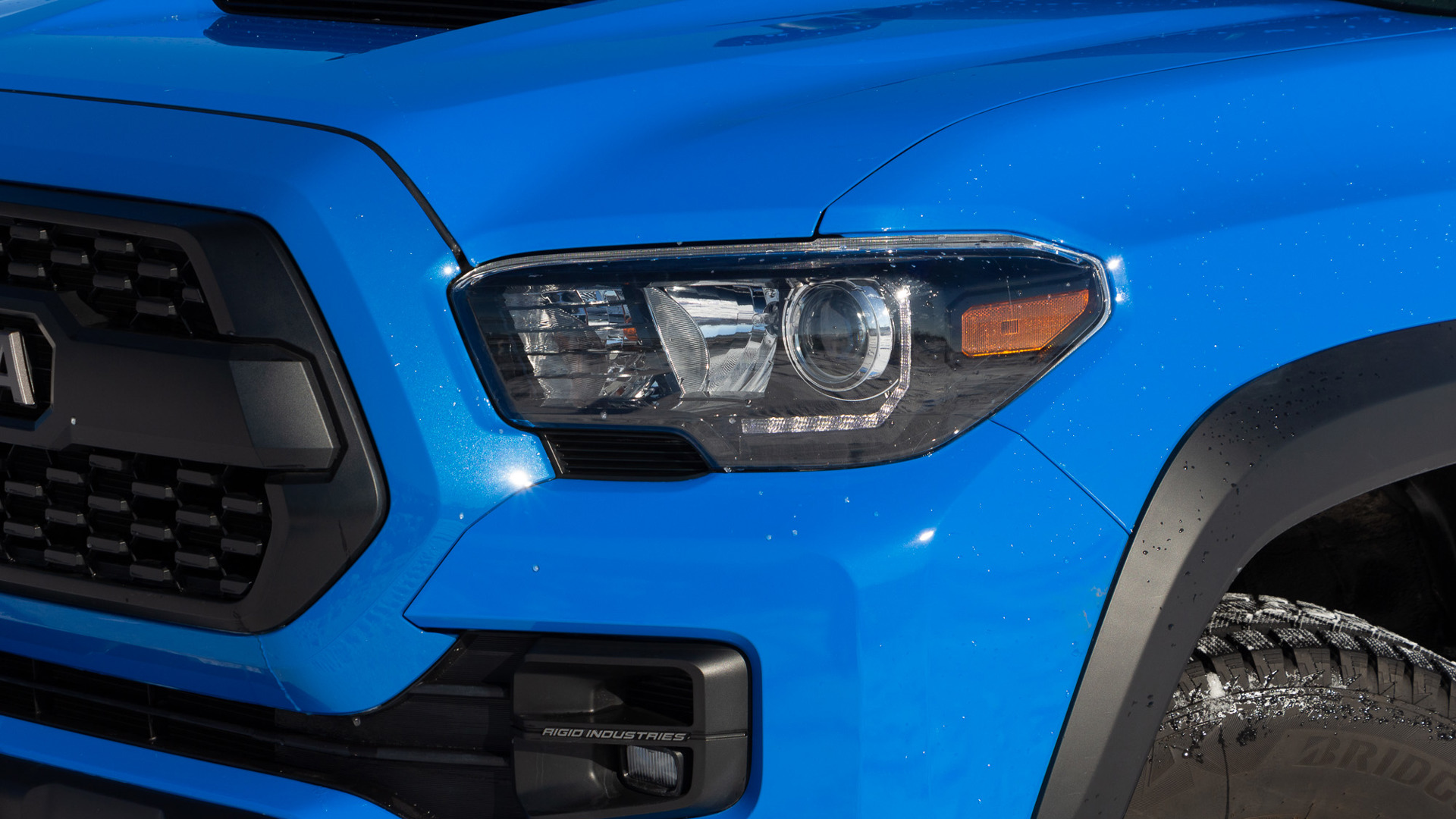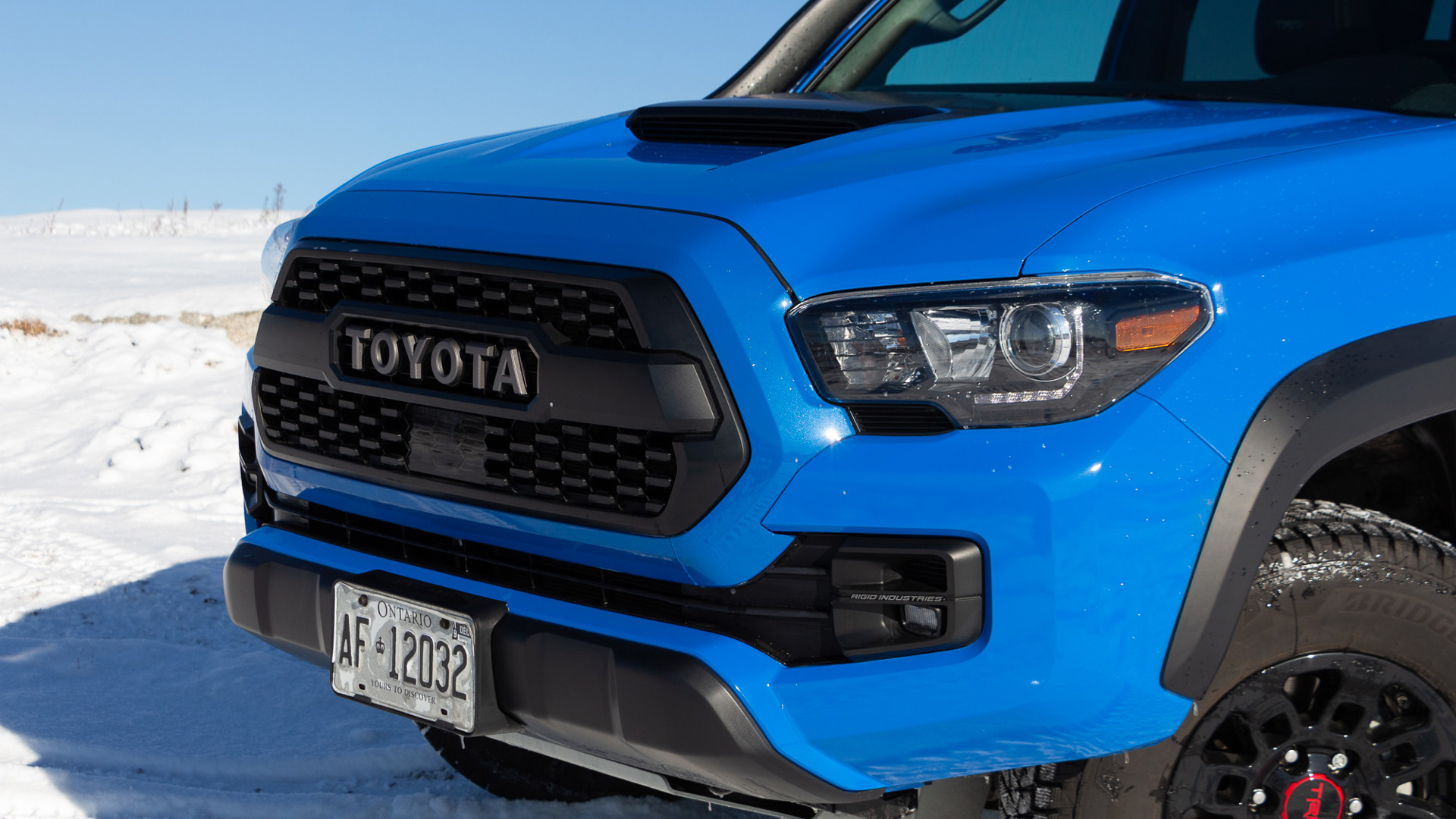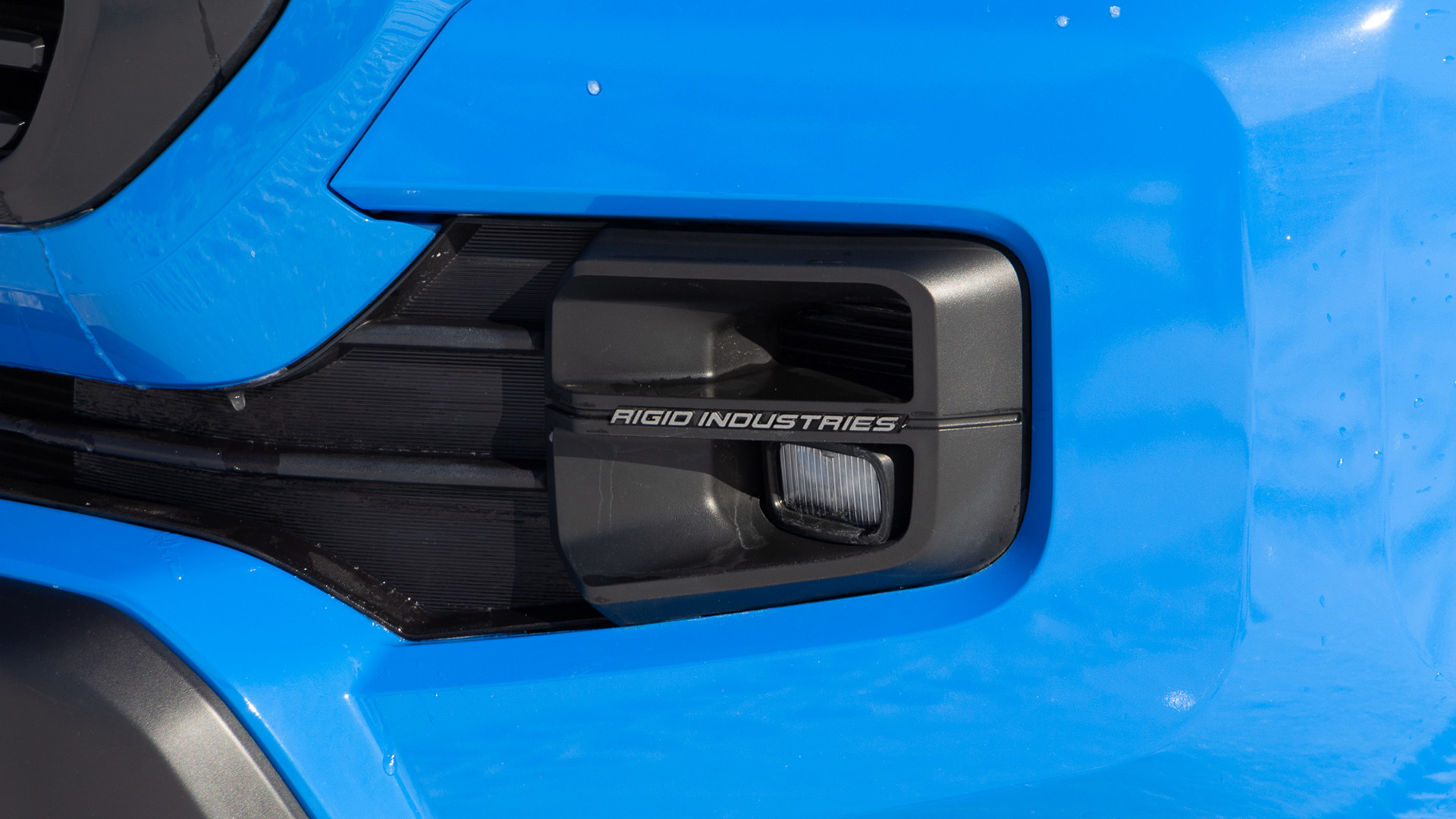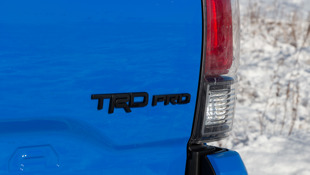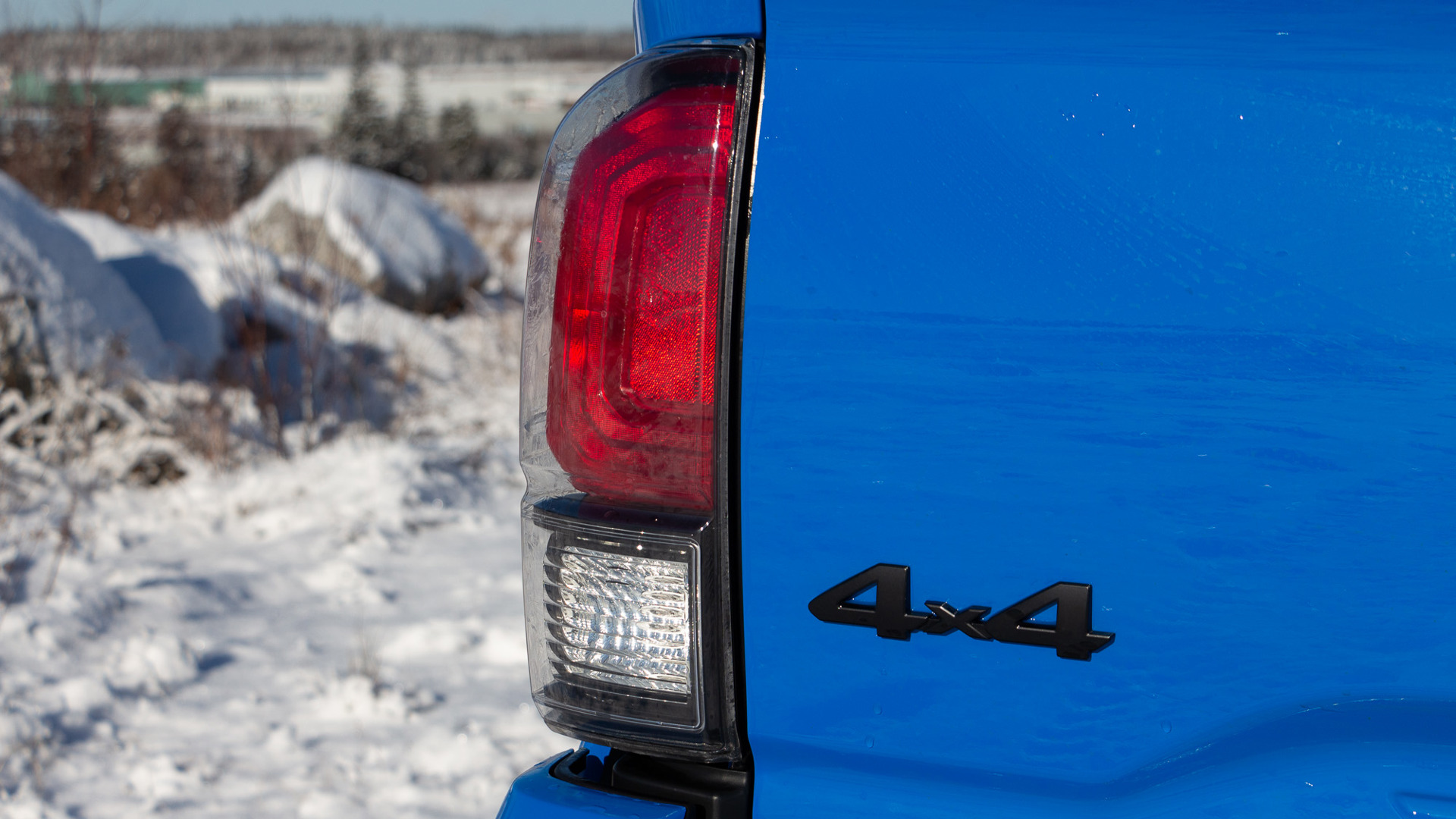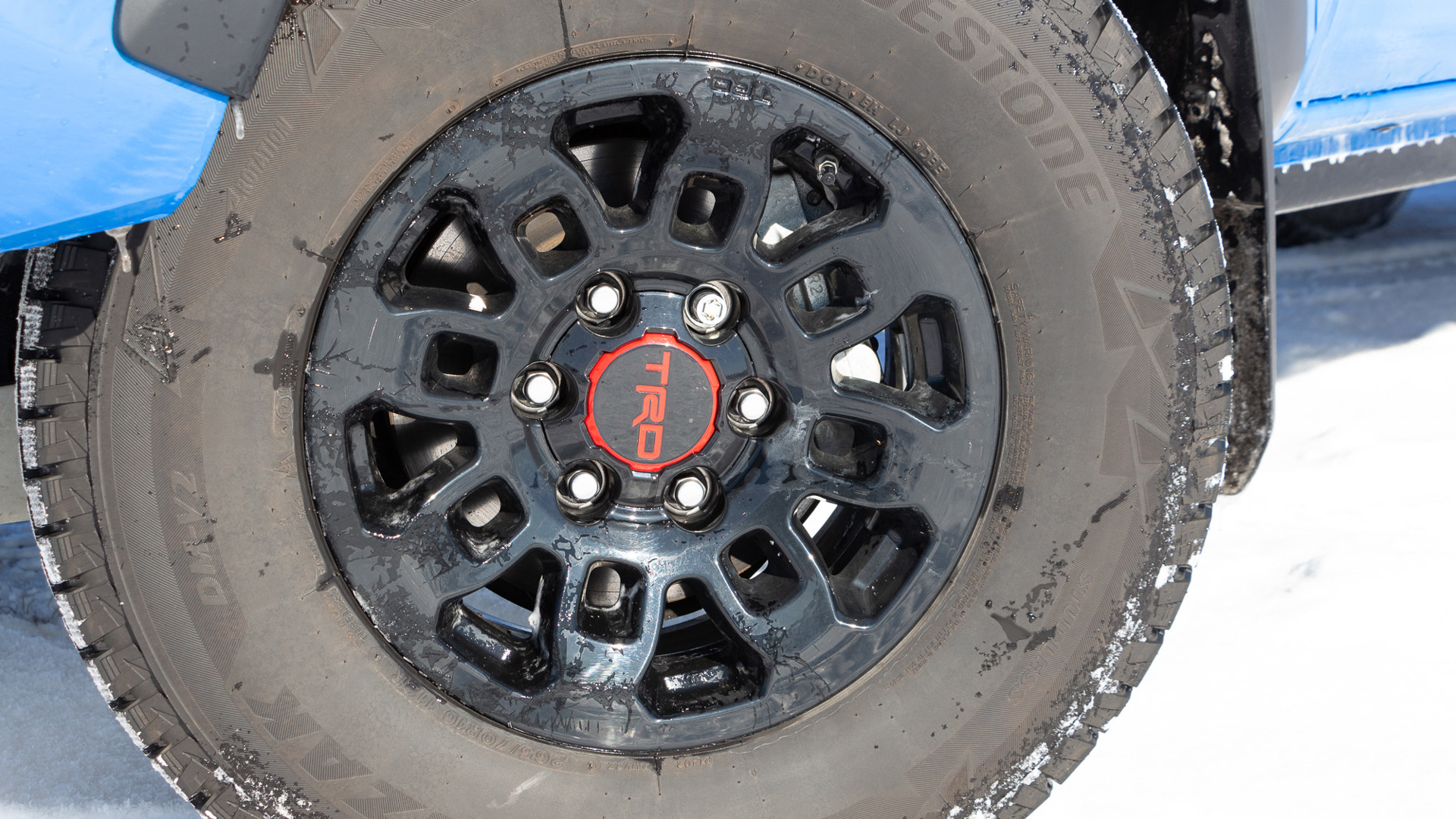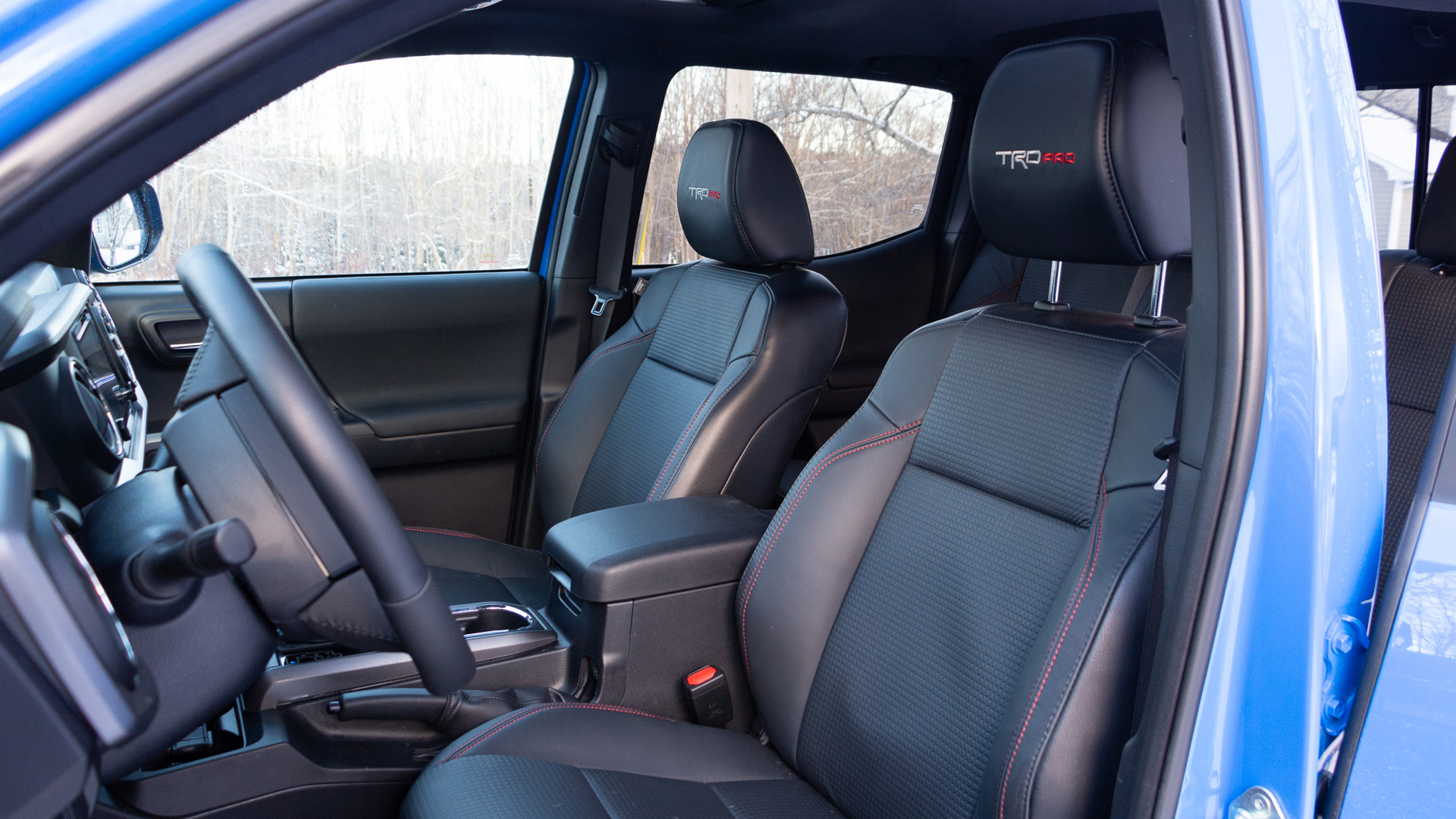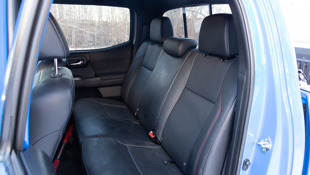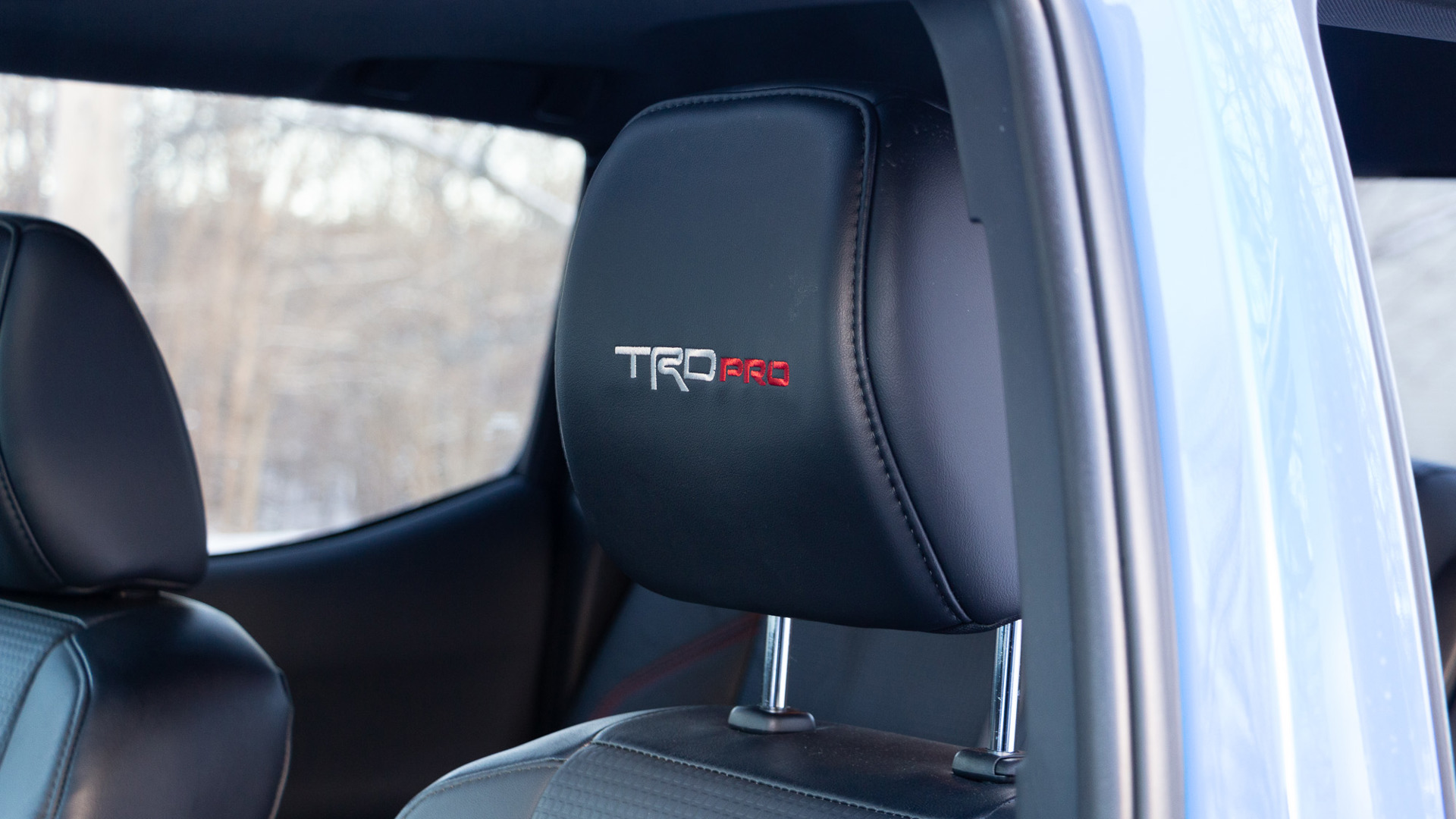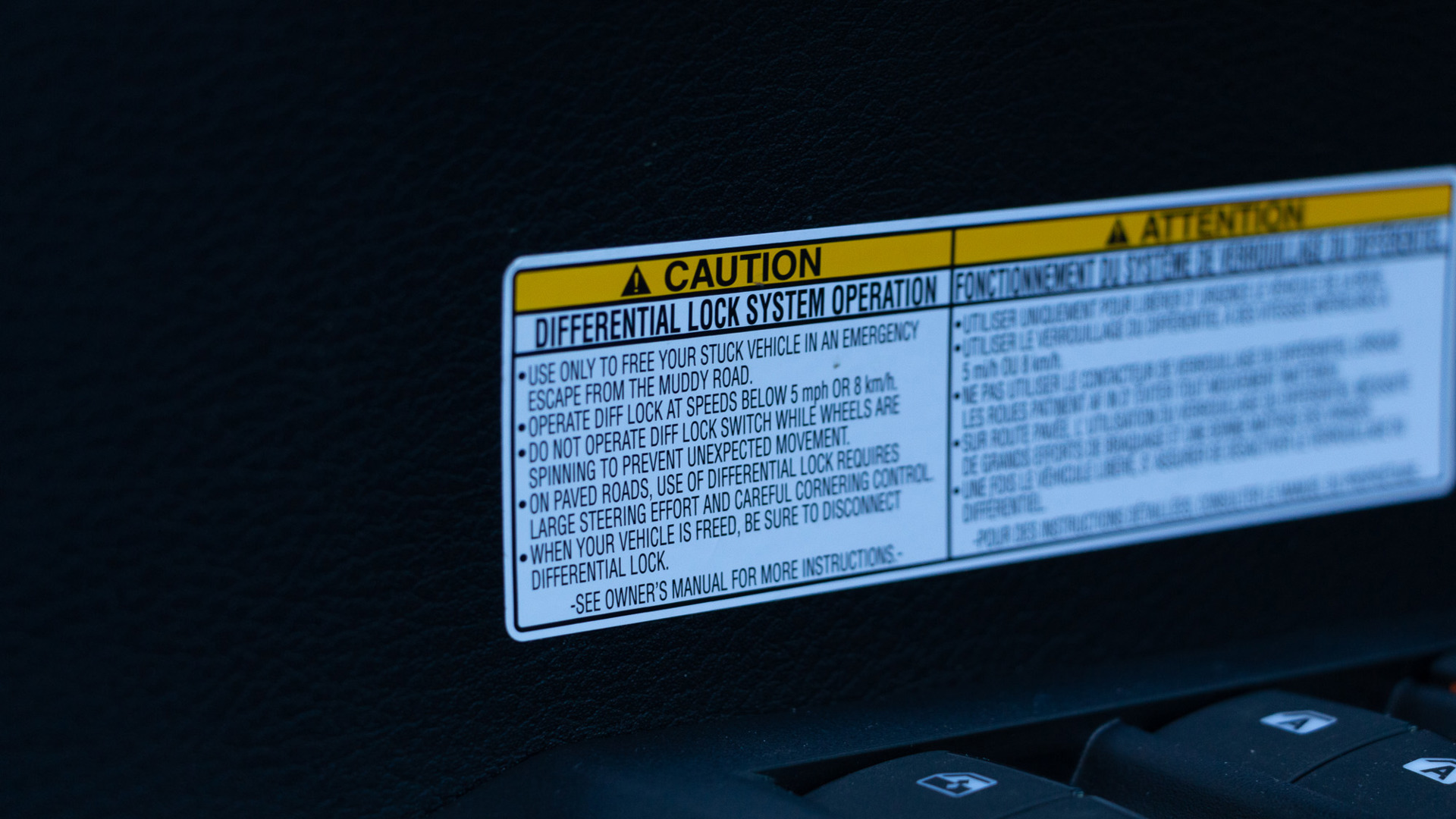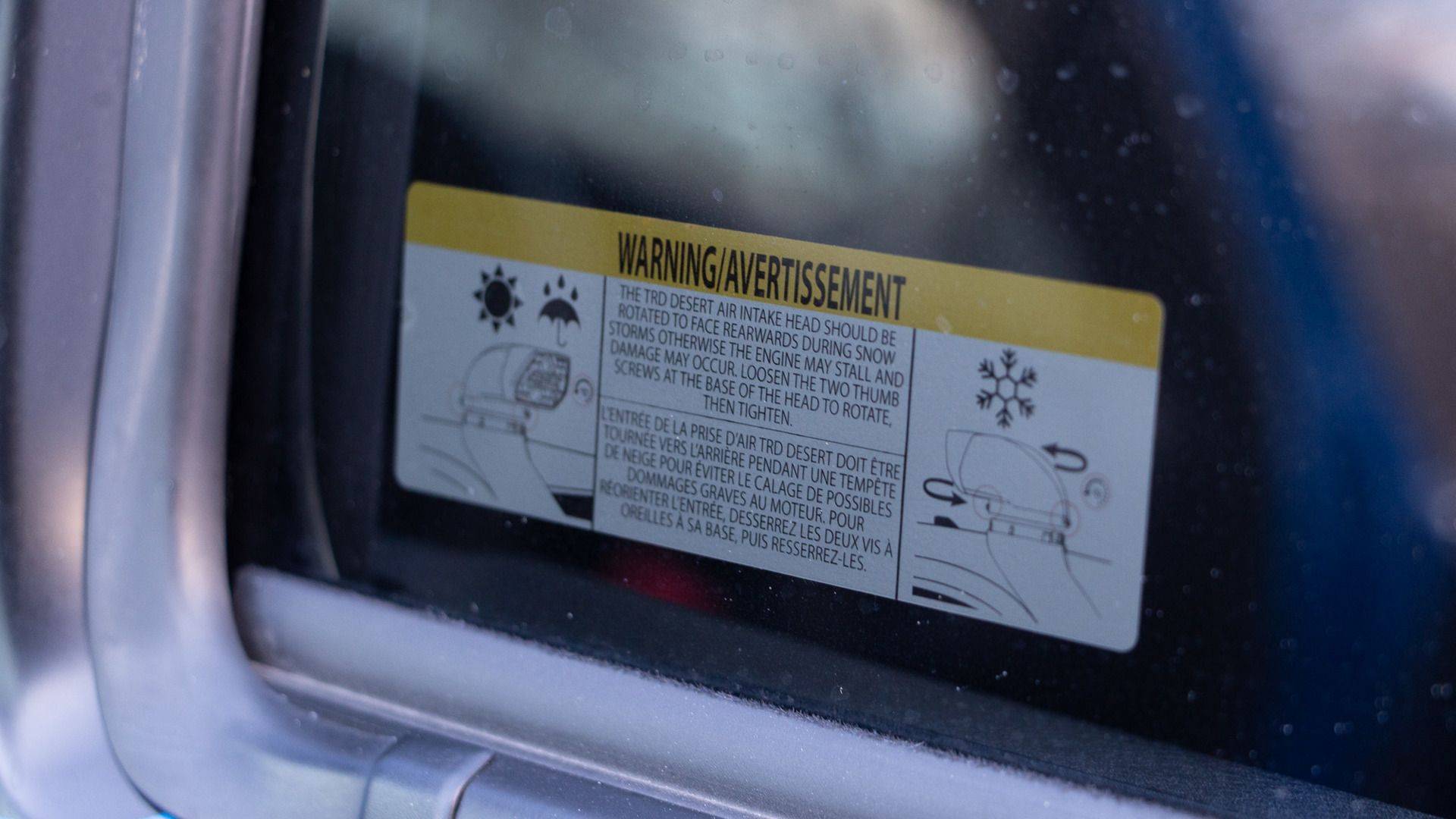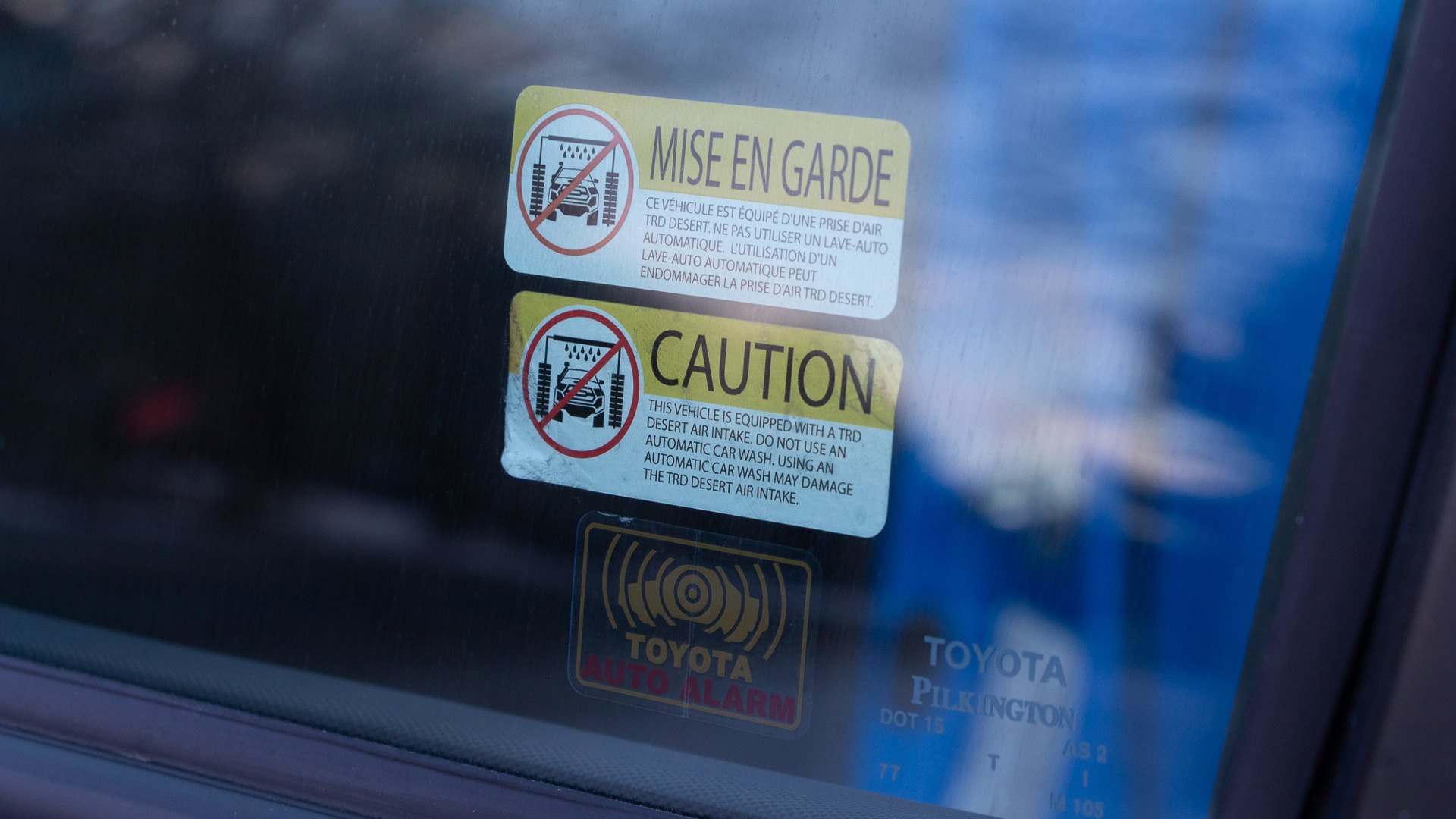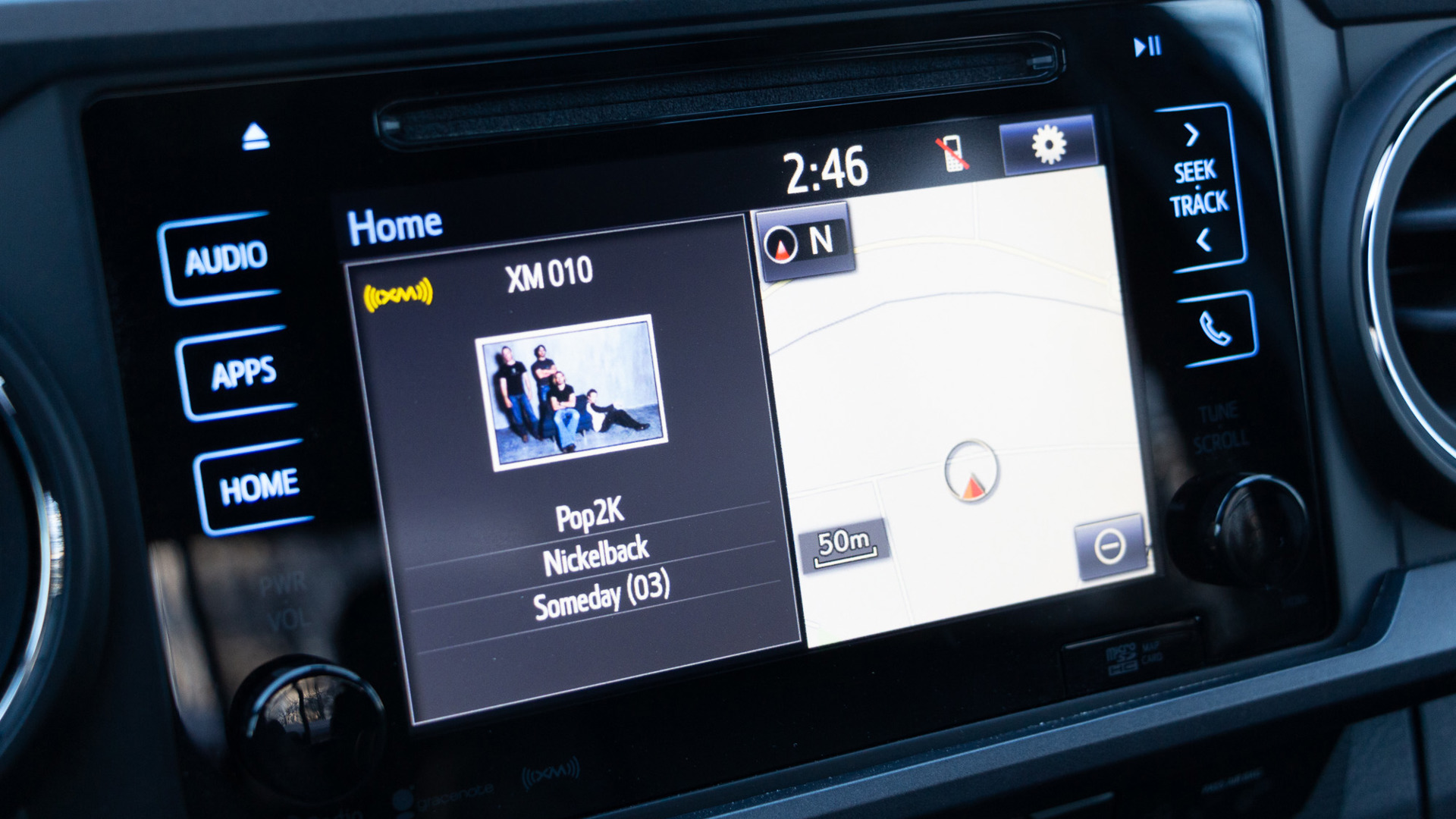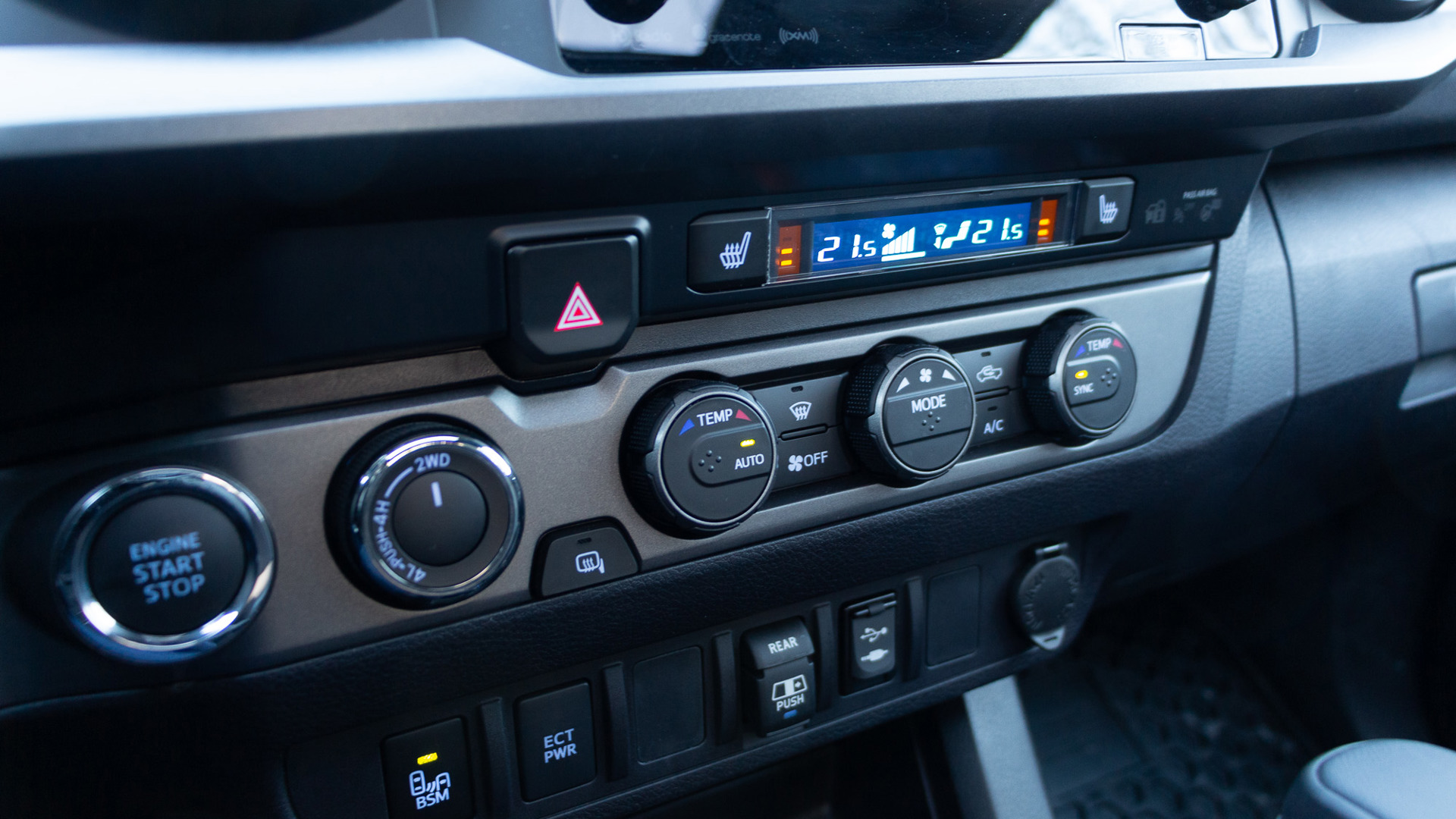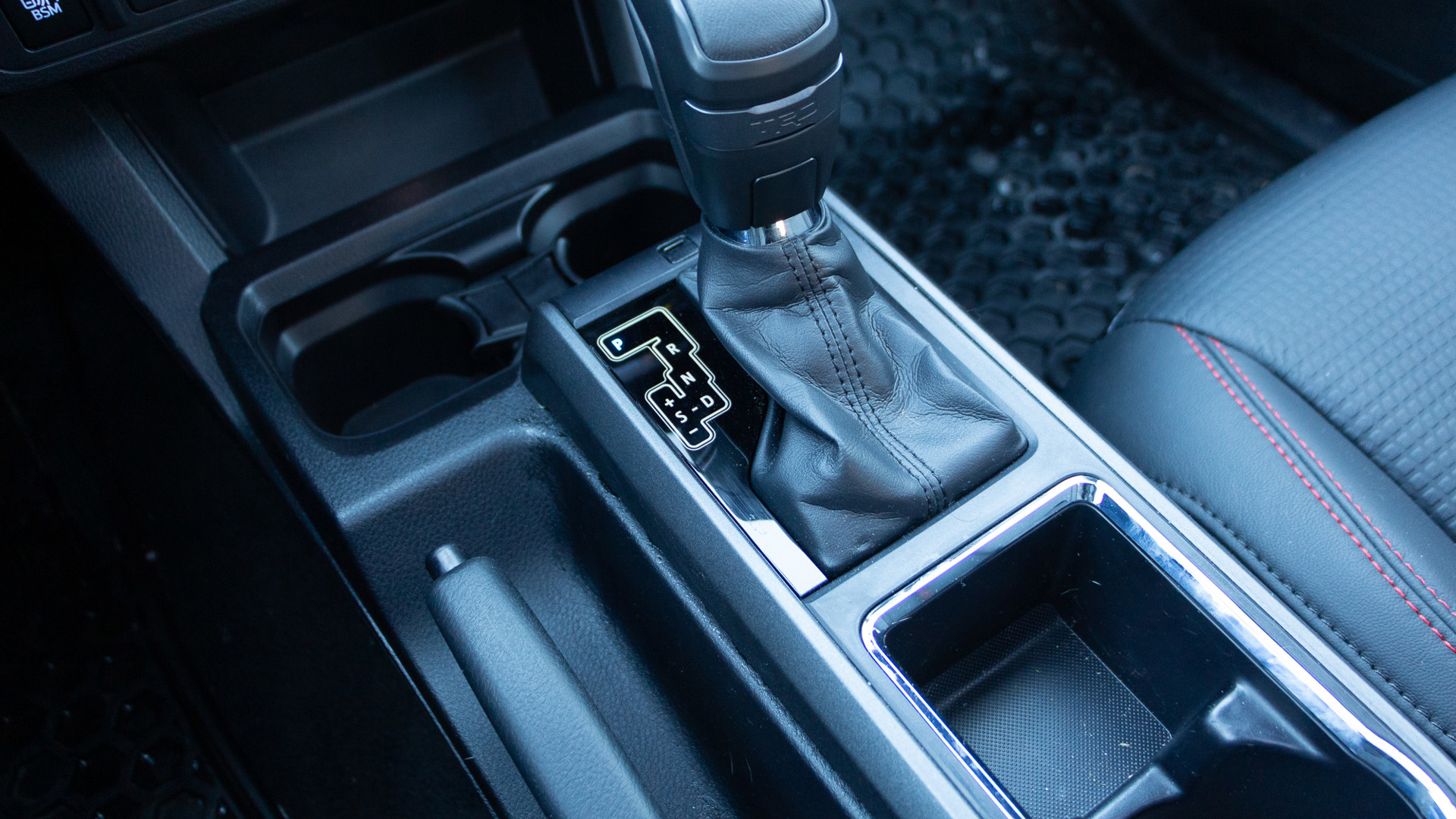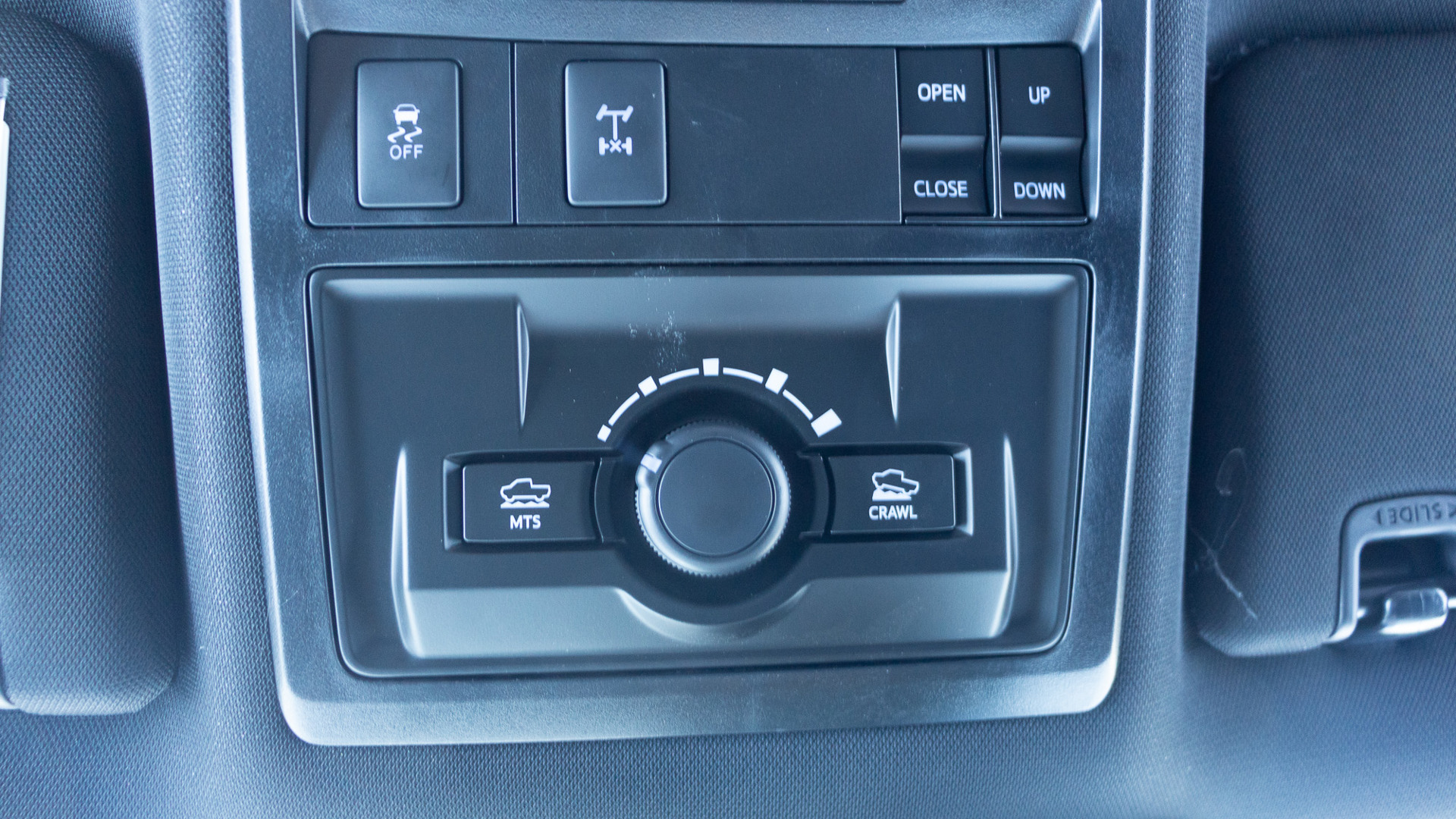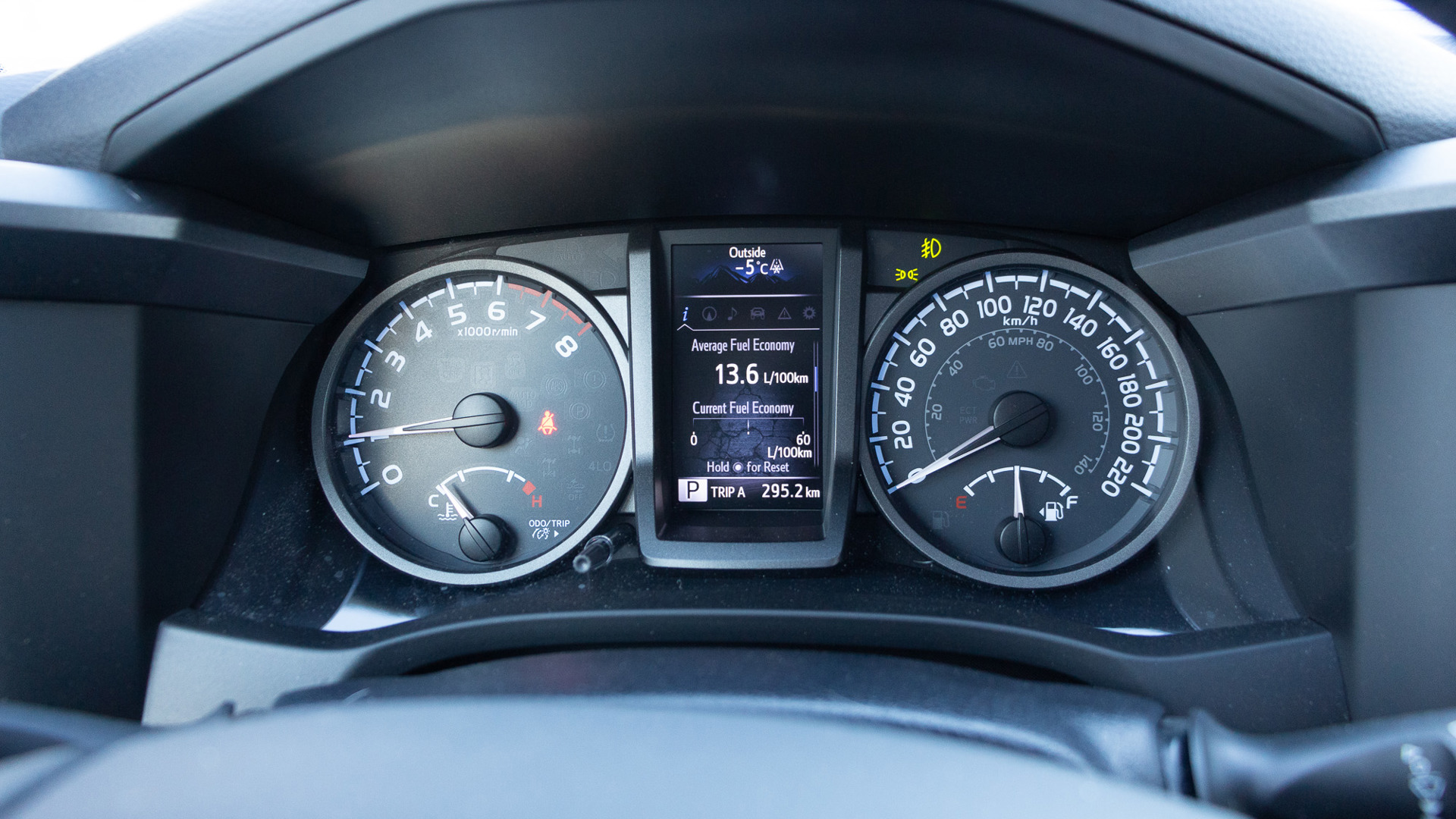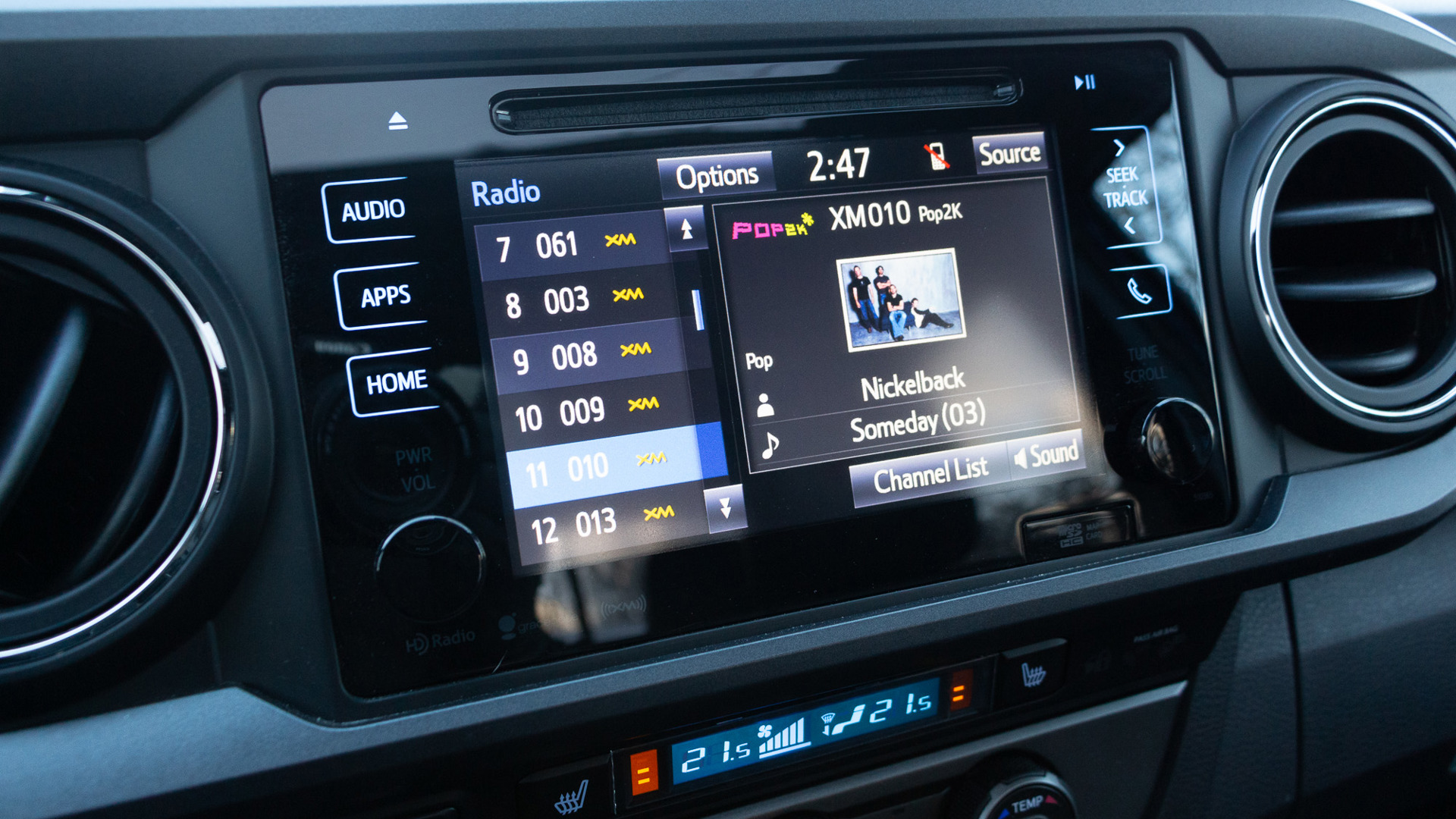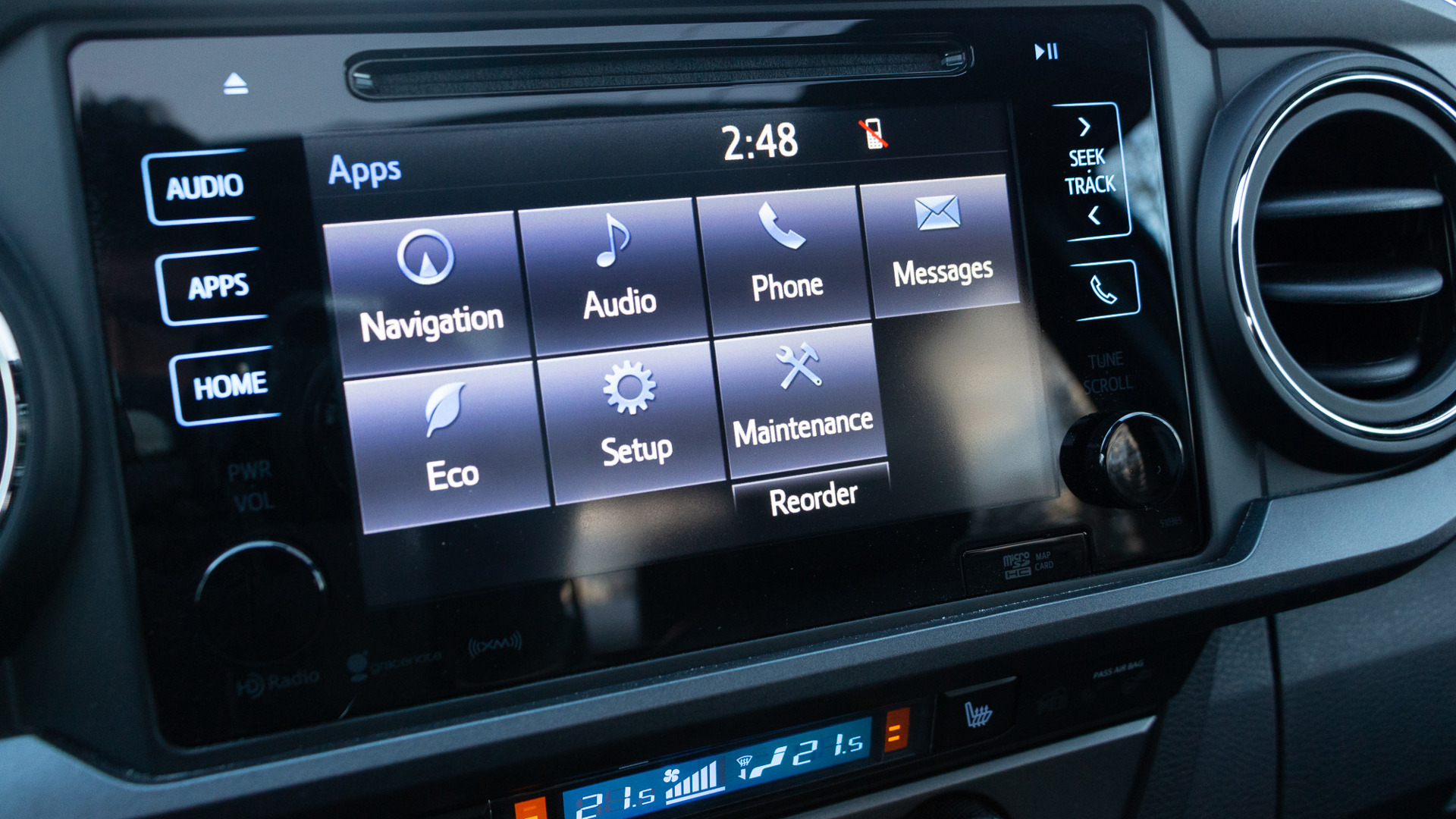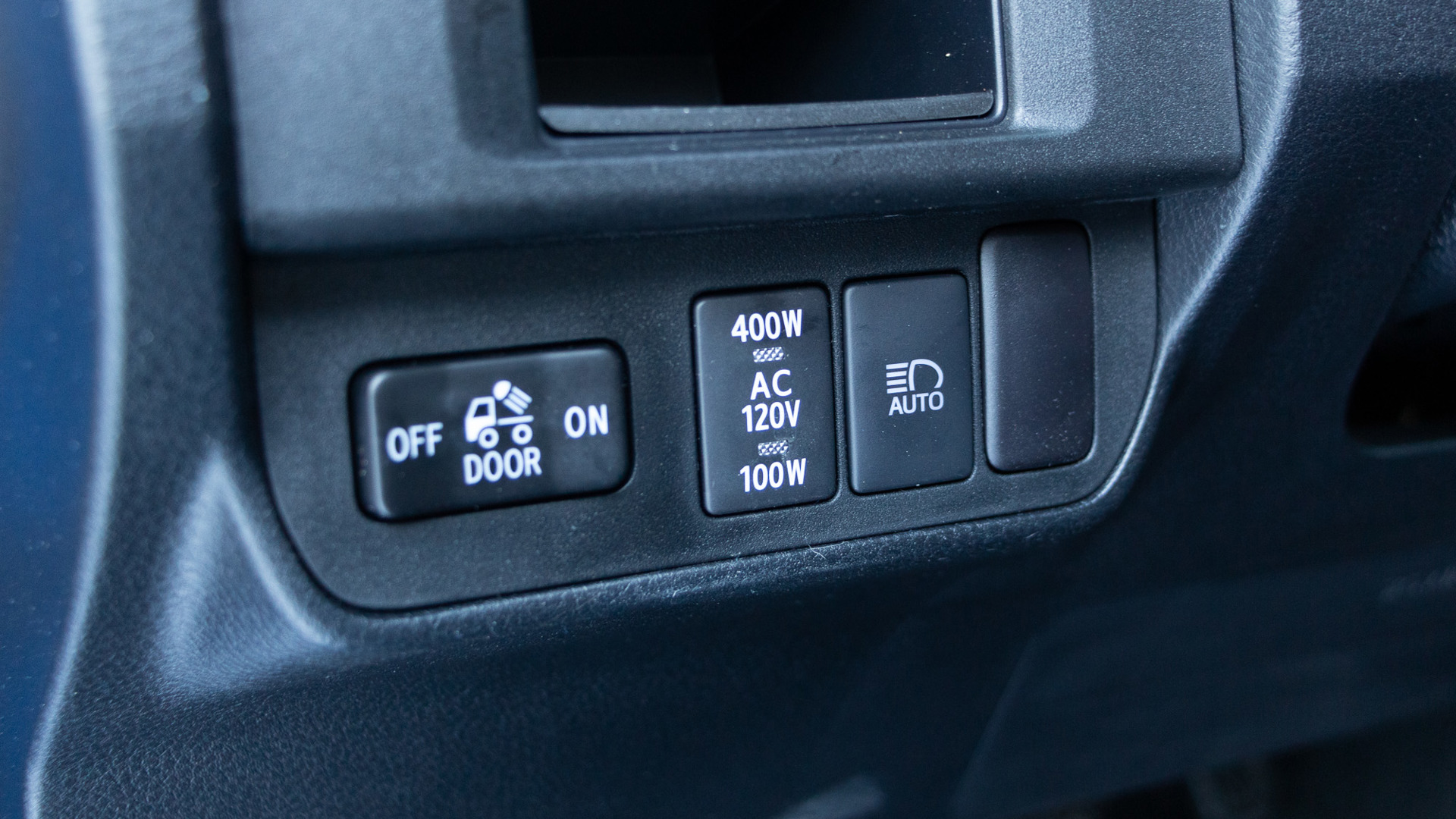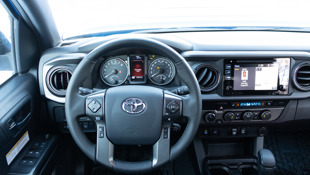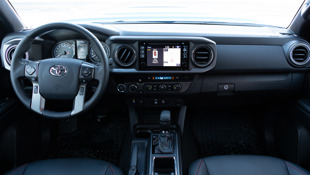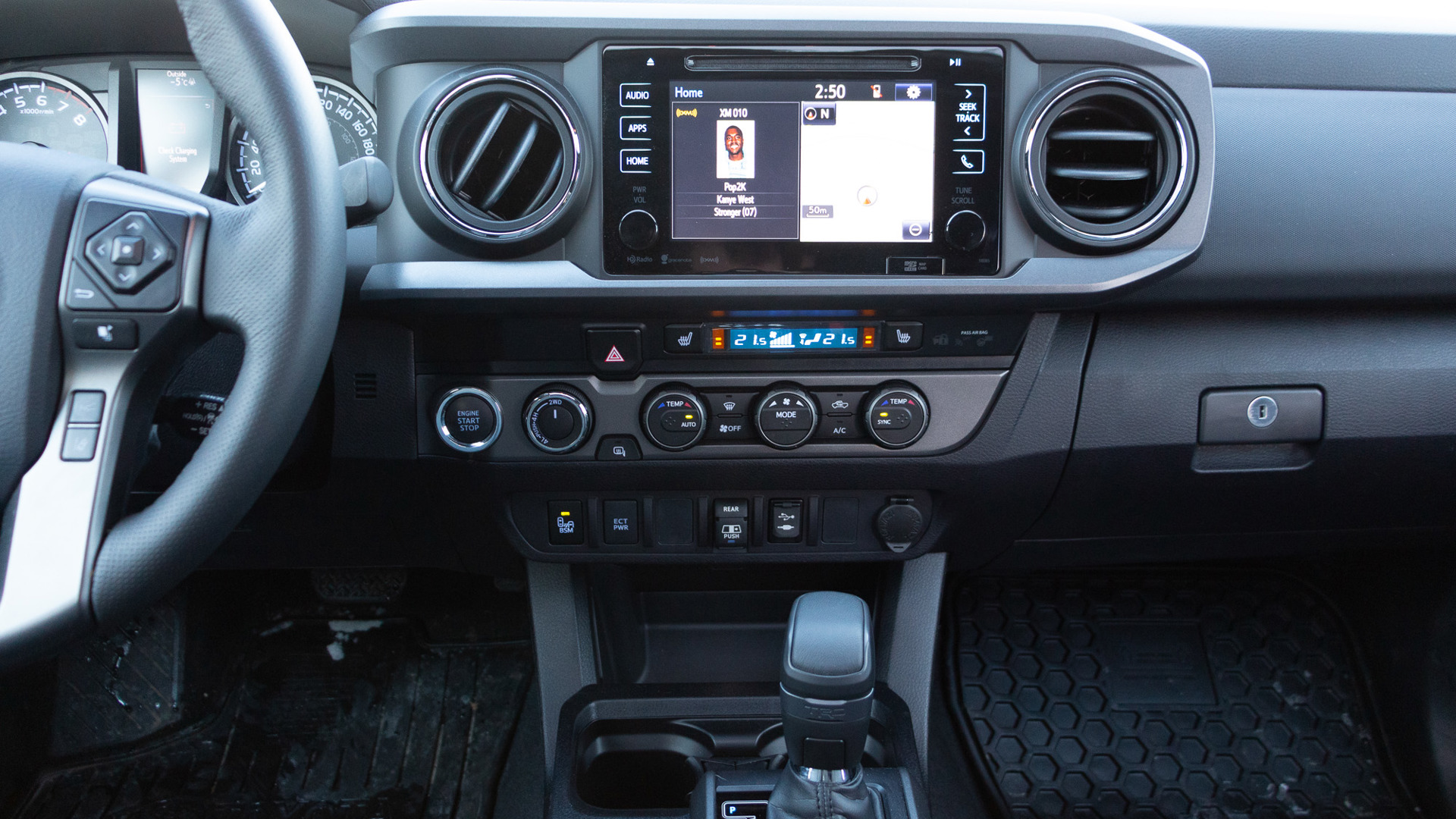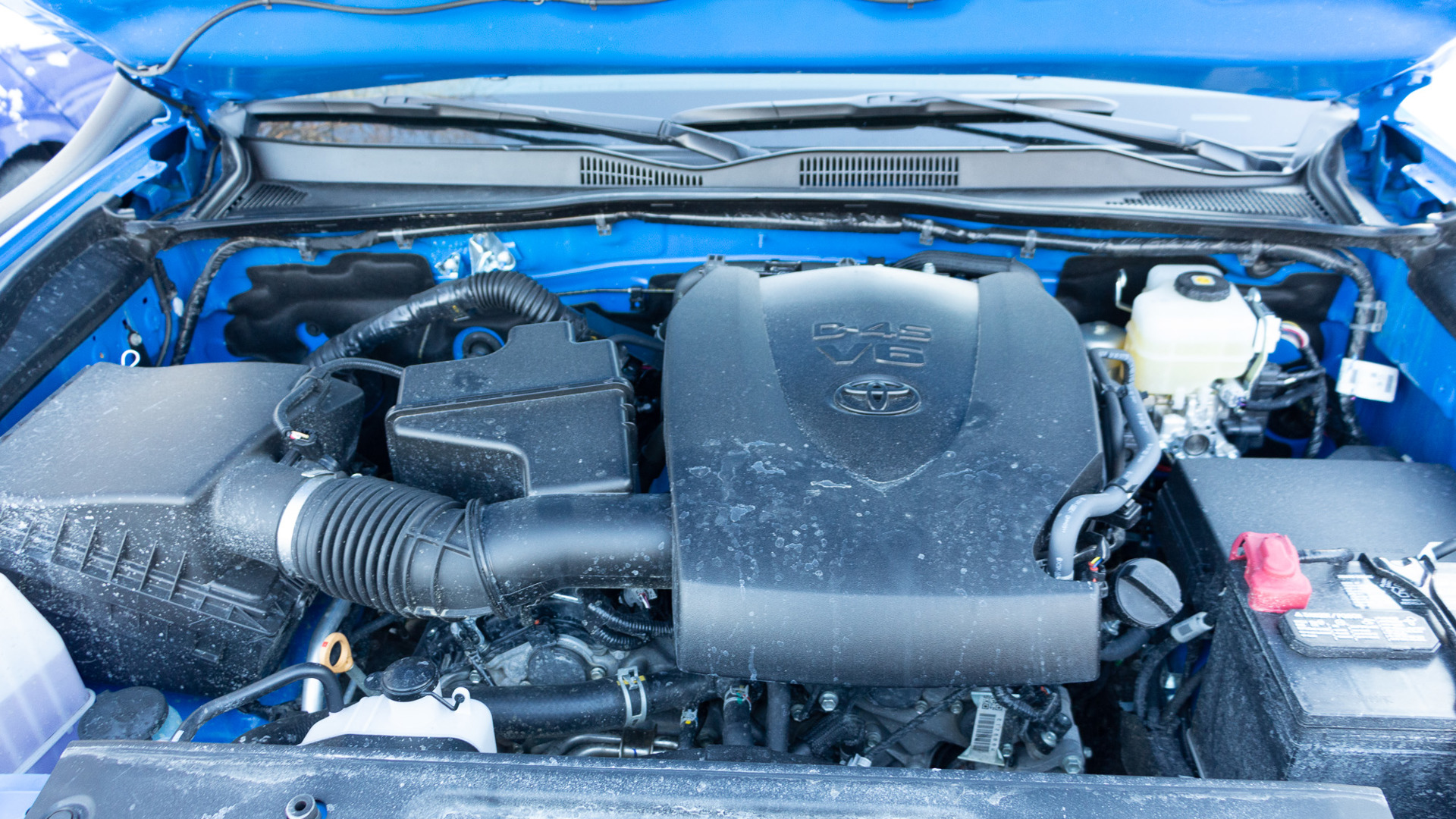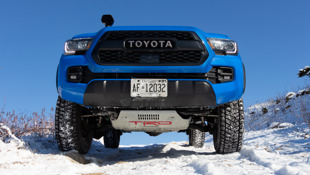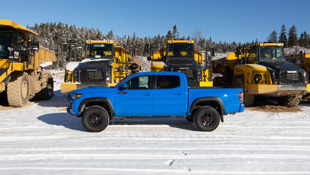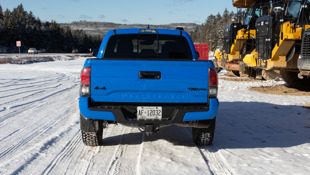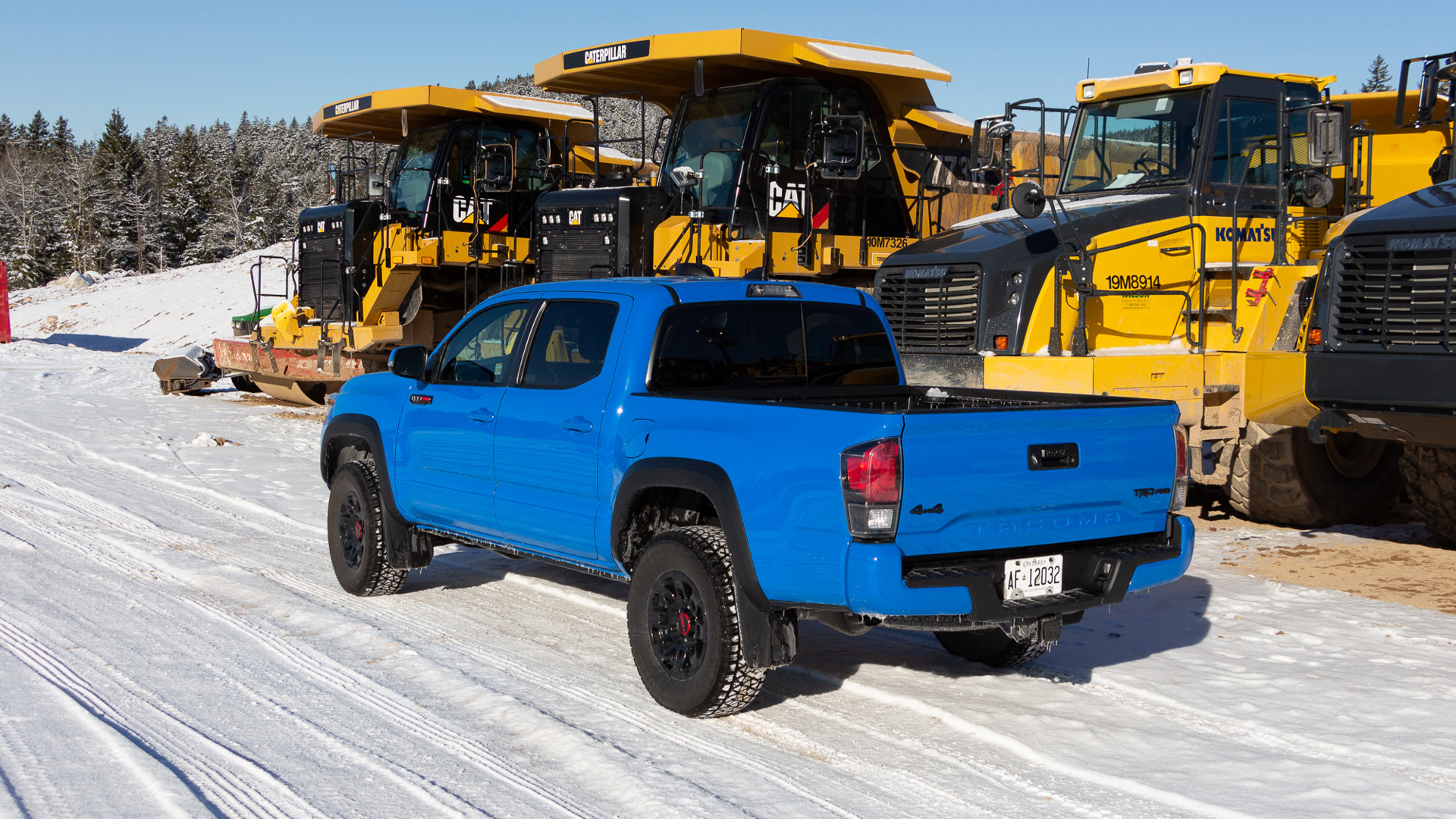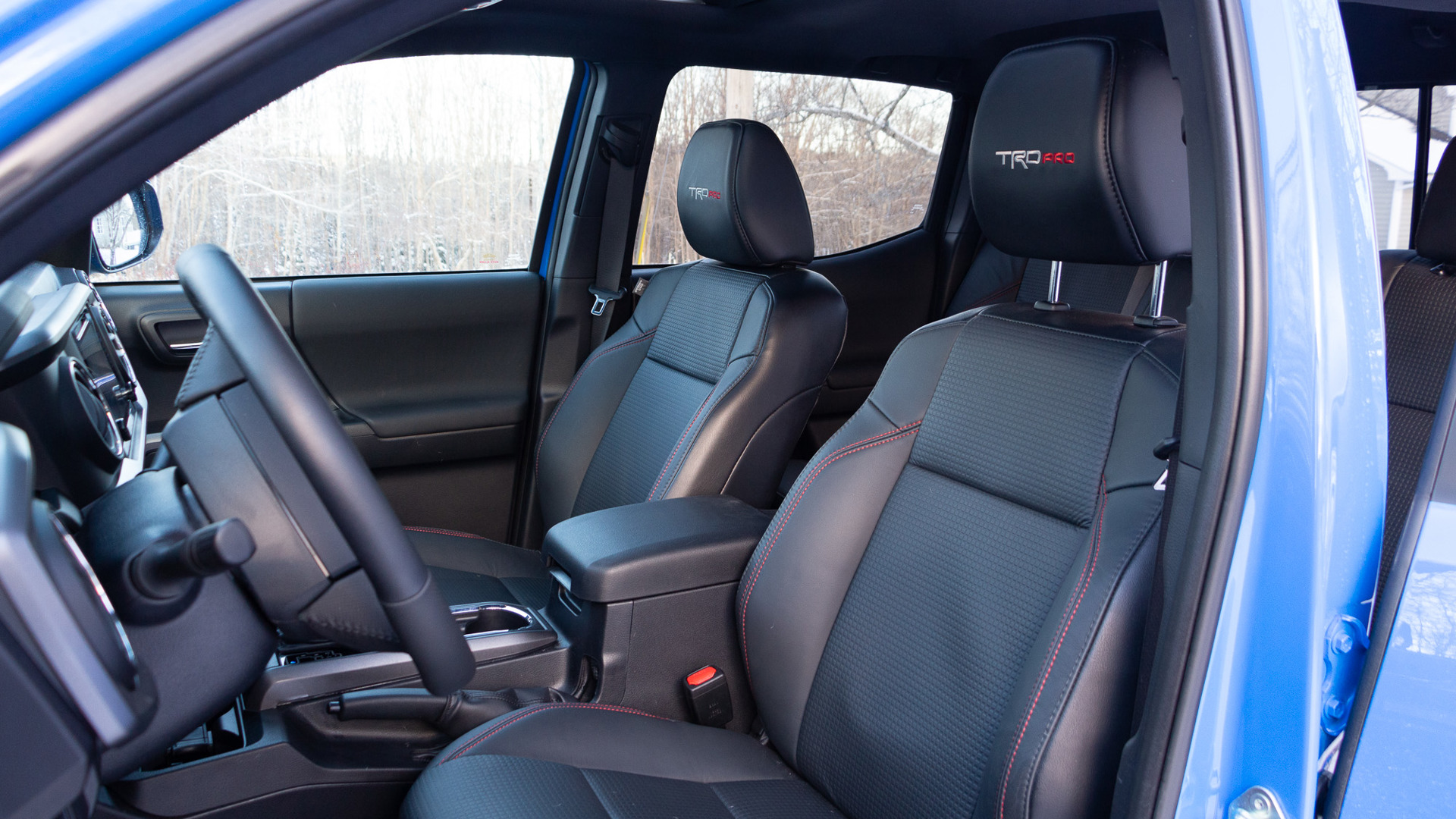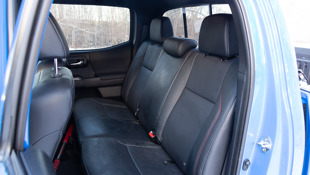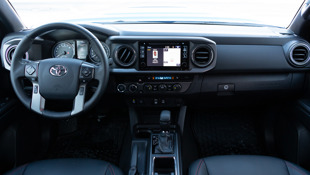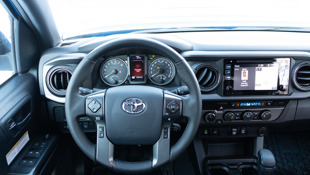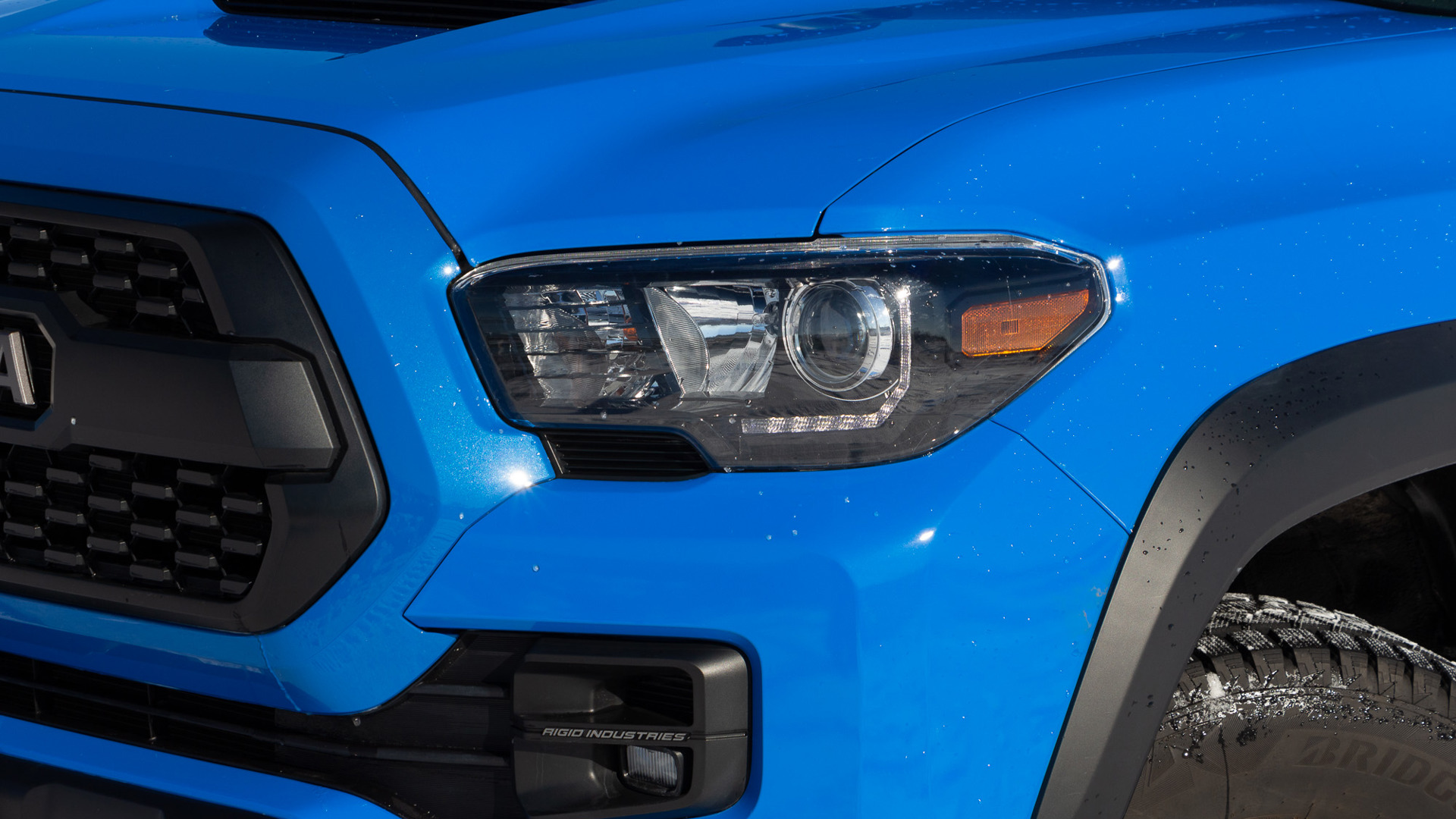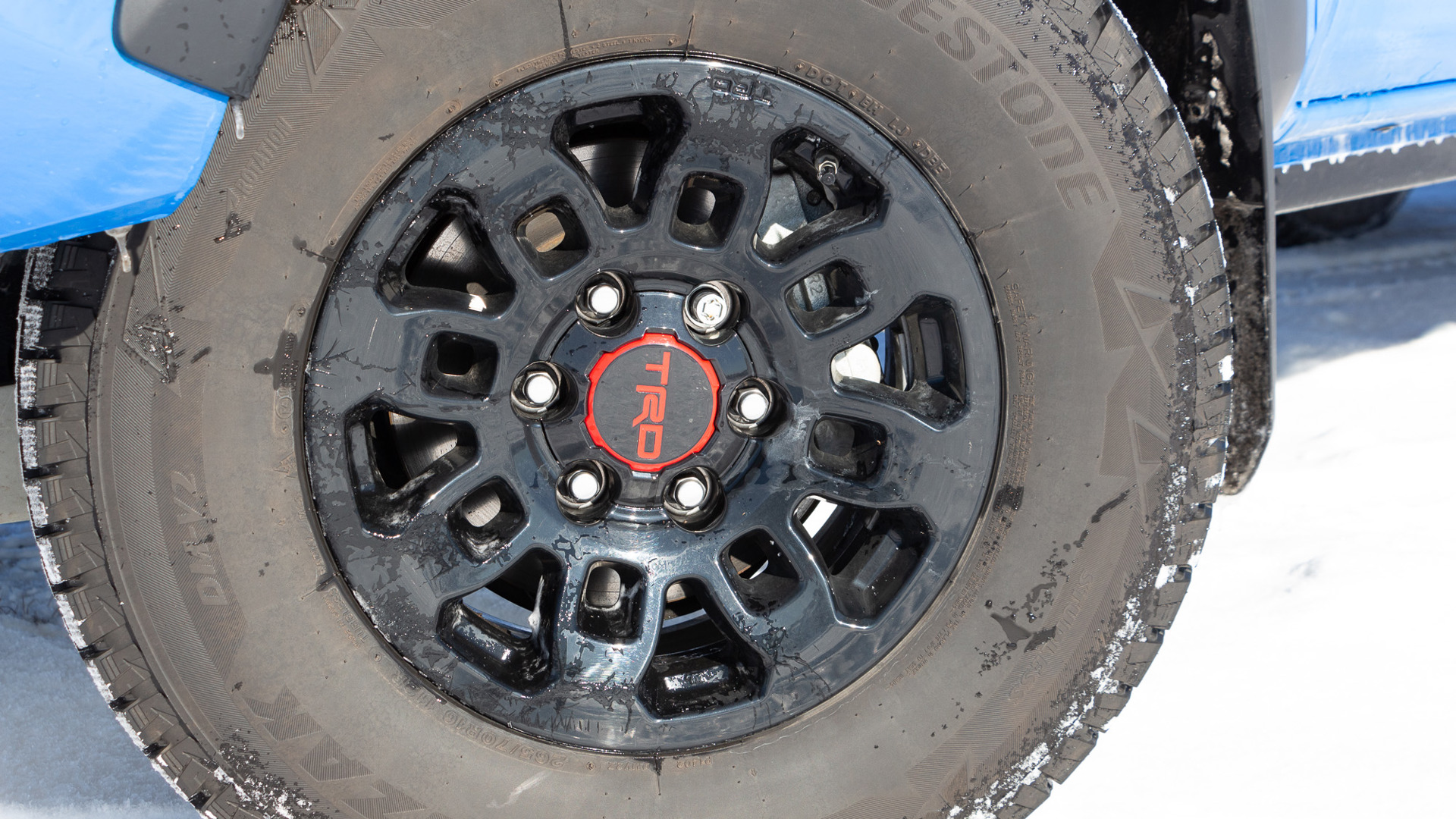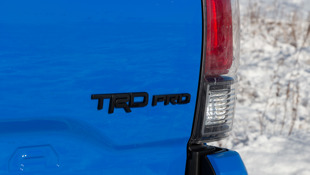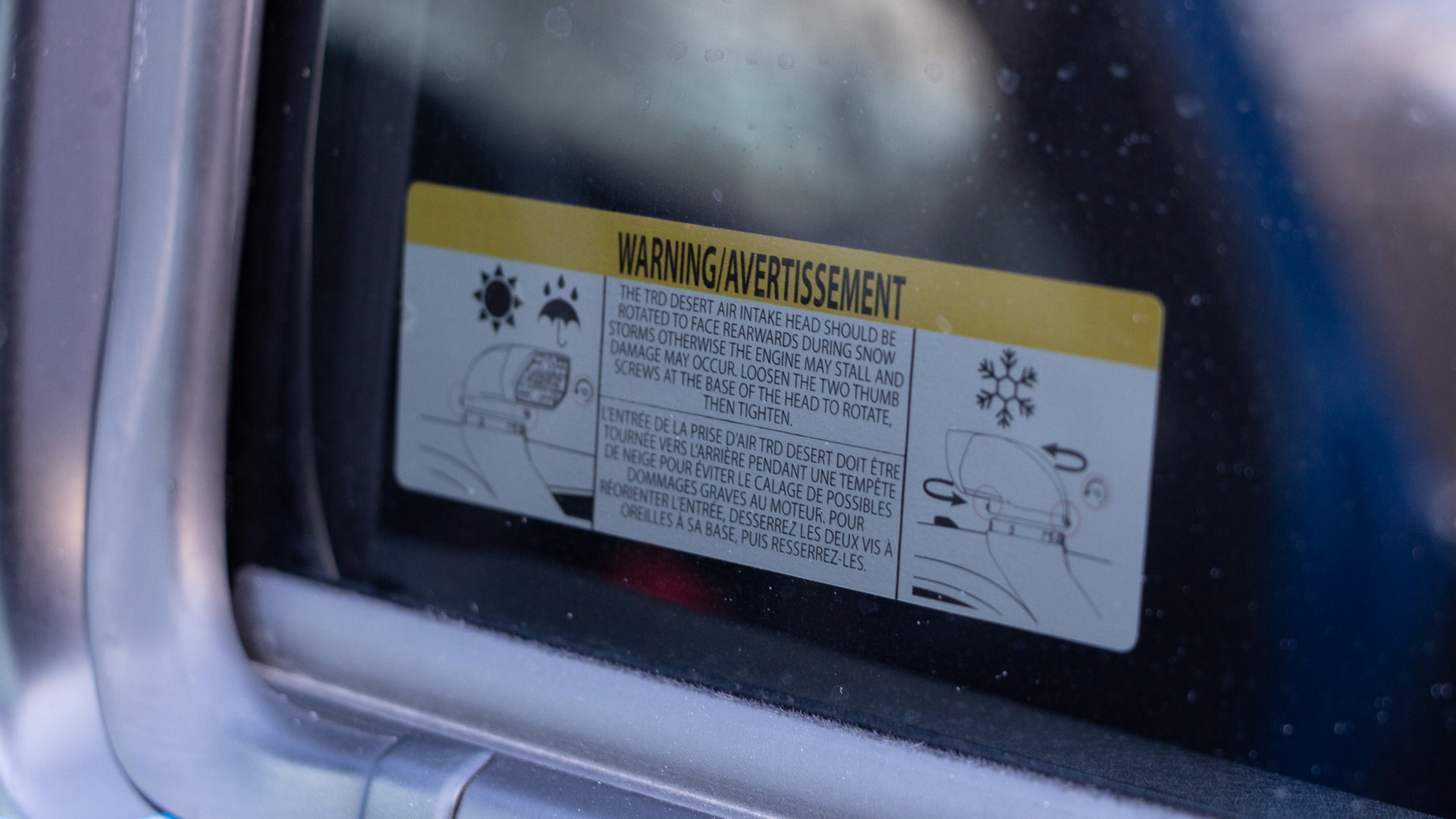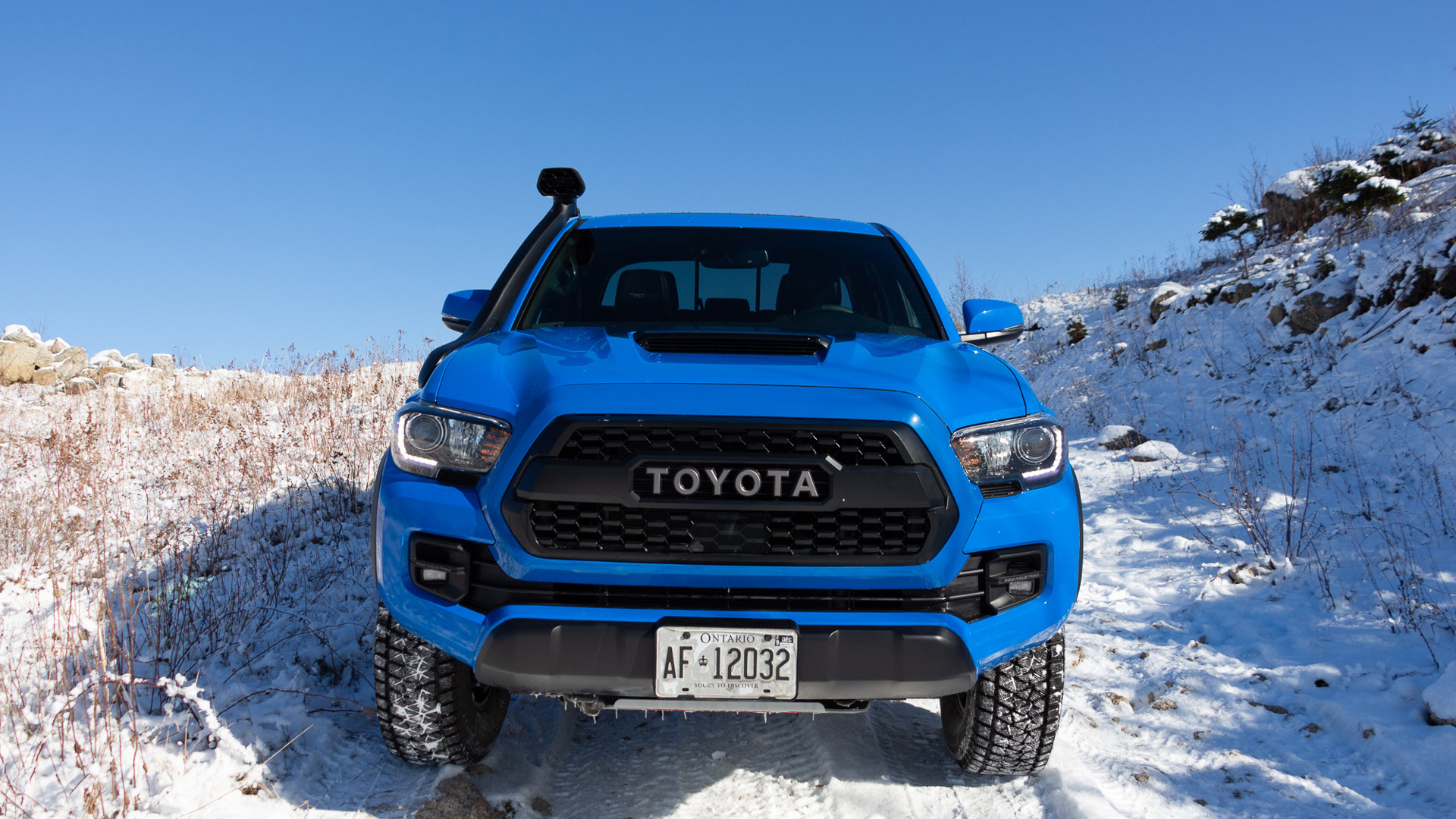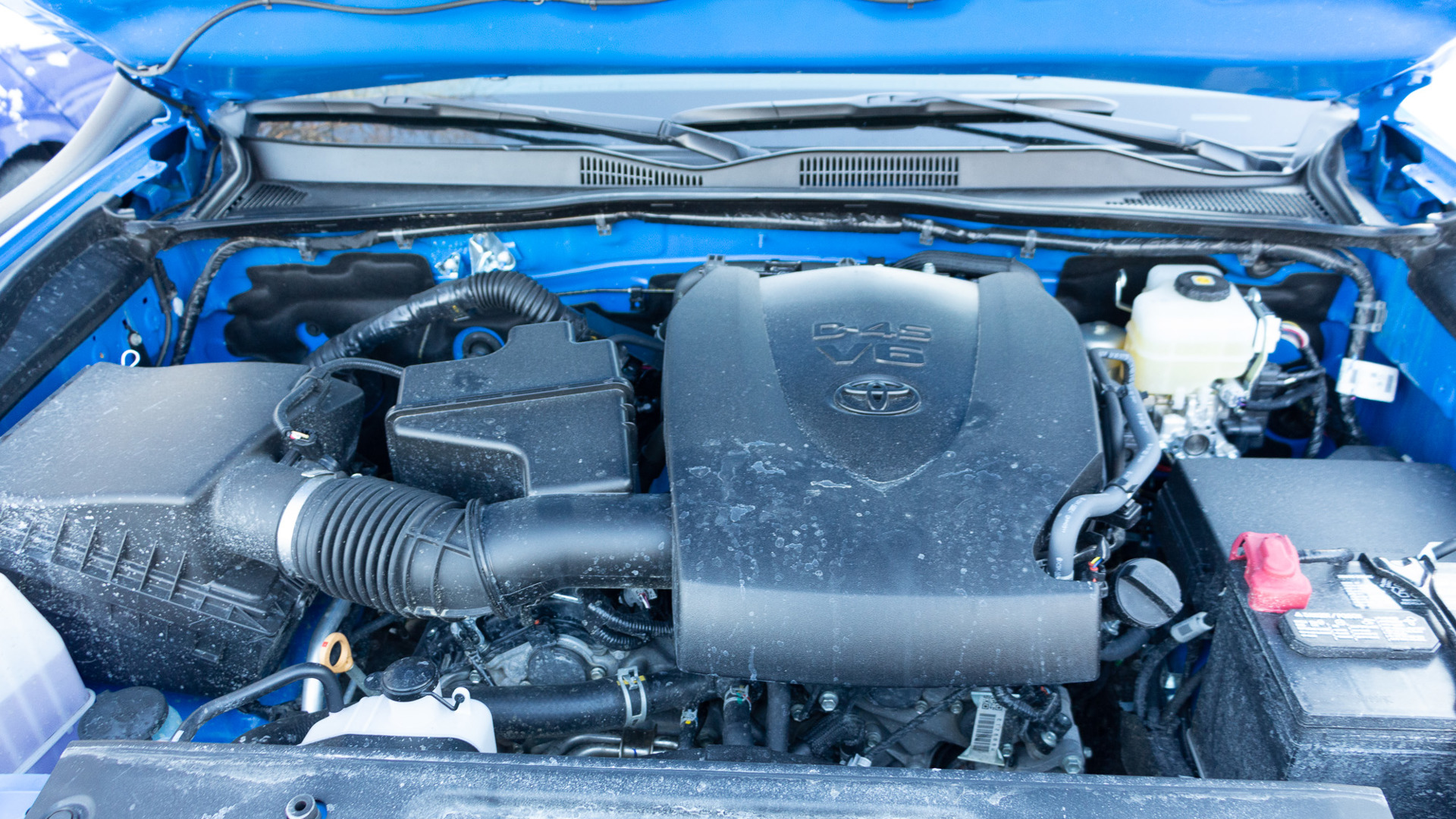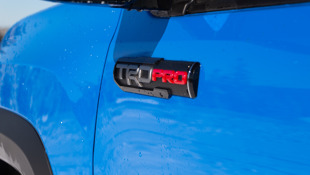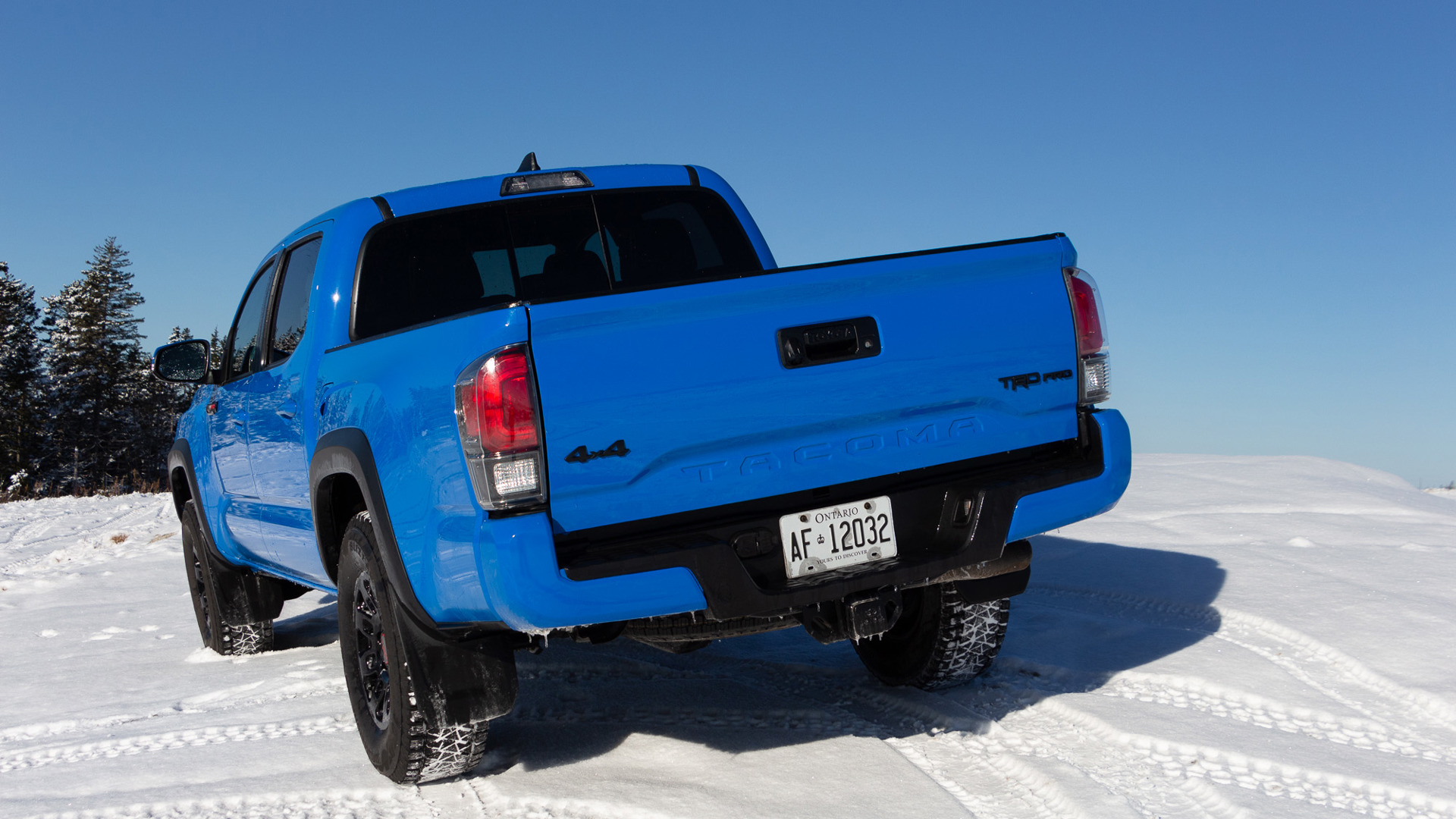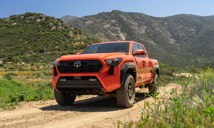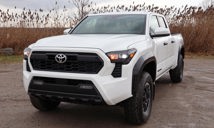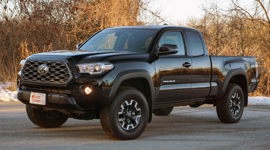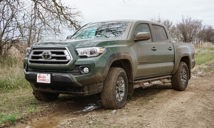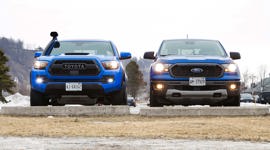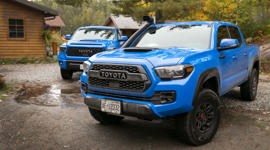 AutoTrader SCORE
AutoTrader SCORE
-
STYLING9/10
-
Safety7/10
-
PRACTICALITY7/10
-
USER-FRIENDLINESS5/10
-
FEATURES5/10
-
POWER6/10
-
COMFORT5/10
-
DRIVING FEEL7/10
-
FUEL ECONOMY6/10
-
VALUE6/10
It's not a snorkel. No, really. It isn't. It's the one question I was asked nearly constantly while I was driving the TRD Pro Tacoma. Even my wife, who is normally as disinterested in cars as I am interested in them, asked me about the snorkel. Except it's not a snorkel. Let's call it the 'norkel from now on.
I suspect it would work as a snorkel. Except that by the time that water gets anywhere near the stock intake, you've already submerged the electrical system. And you're probably in water up to your jeans in the cabin too.
So what is it? After all, it sticks up above the top of the cabin like a snorkel. It's sealed to the intake like a snorkel. If it was attached to any vehicle by an aftermarket company, it would be labelled as a snorkel. But it isn't. It's a desert air intake. Make that a Desert Air Intake, because Toyota makes sure to use capital letters when they're talking about it. Maybe that's a better name than the 'norkel badge I was planning to have made.
If you take a look at the three (yes, three) warning labels on the Tacoma for the 'norkel, you'll probably understand why Toyota isn't calling this a snorkel. The first one says you can't take it through a car wash. Period. No automated car washes. Why? Because it's sealed (like a snorkel) and it can suck too much water into the engine. The second one says that if it's snowing, you need to put your thing down, flip it, and reverse it. The top of the intake needs to be unscrewed and turned around. Backwards baseball cap style. Did I do this? No. It was well below freezing out, and I wasn't about to take a flathead screwdriver to a brand-new pickup with ice-cold fingers.
So what exactly is a desert air intake? Well, it's like a snorkel. But for dusty roads. See, when you're bombing through the desert, or down your favourite rally stage, things get dusty. Filters get clogged. Power gets reduced, and you get stranded. But you don't want to be stranded because of some dust. That's not very Pro, is it? So Toyota sticks the intake way up high, where it can suck in clean air instead of sand. I suspect it would work as a snorkel in the water, too. Except that by the time that water gets anywhere near the stock intake, you've already submerged the electrical system. And you're probably in water up to your jeans in the cabin too.
That's a lot of words about just one of the changes Toyota has made to make the Tacoma a TRD Pro, even if it is definitely the most noticeable. It's also the most irritating when you're trying to scrape frost from the front glass and have to reach around it. But there are more features that help turn the Taco into a desert runner.
The next most prominent feature is the underbody skid plate in the nose. The piece is about 6 mm thick and made from aluminum so it should be both light and remain shiny for a long, long time. It features a big red TRD logo, and highlights the "heritage grille". Heritage, in this case, meaning a throwback to the black-out grilles of the 1980s Pickup and its prominent Toyota badging. It's a cool addition to the truck and looks extra '80s if you pick a Marty McFly-style black truck instead of the (still cool) Voodoo Blue of my tester. Under that grille are LED lights from Rigid Industries that actually do a good job at shedding some extra light on the road.
Those are some cool appearance changes, but that's not what makes the TRD Pro, well, Pro. Those changes are hidden behind the 16-inch alloy wheels.
At the front, the Taco gets new TRD coil springs that offer a 1.0-inch lift. In the rear, the height isn't changed, but the leaves get a new progressive rate. Both tuned for pounding over whoops in the sand.
There are new shocks as well. While Chevrolet's Colorado ZR2 heads straight to the track-day motorsports aisle with spool valve shocks from Multimatic, Toyota has taken a more conventional route: internal bypass dampers from Fox Shox.
They're designed with special channels inside that let them deliver different damping rates depending on where in the suspension travel the shock is at that moment. If it's about to bottom out, it's stiffer. Early in the travel, it can be plush. The shocks are new to the TRD Pro this year, and are really the key feature. The front dampers have a total of eight bypass zones, with 11 in the rear.
On the road, the ride isn't quite, as Toyota says, plush. It's more what I'd call wallowy. Turn-in is sluggish and the truck rolls heavily, despite a larger front sway bar. Where off-road biased pickups usually excel is when the pavement is more pothole and crack than asphalt. With ever-growing road maintenance costs, that's just about every road these days. When the TRD Pro hits a hole in the road, it seems to unsettle the truck. There are three or four distinct oscillations each time. Apply the somewhat grabby brakes, and the nose of the TRD Pro dives for the ground. And because there are more bypass zones in the rear, the front and back of the truck respond differently.
Despite that busy ride on-road, the TRD was a bit of a surprise off-road. Not in that it was competent, this is a truck aimed at dirt and rock crawling, so that was expected. The surprise was in how deceptively smooth it was. My usual off-road track has a stopping point about 5 km in. It's at the end of a rough logging road and a good place to check and make sure there's nothing wrong with the truck and that the tires are still inflated before a faster and more open stretch begins. I thought the Tacoma was reasonably comfortable, though not quite as smooth as the Colorado ZR2.
Until I realized that I was already at my 5 km turnout. About 50 percent more quickly than I had expected to get there. Where most trucks would keep me somewhere between 35 and 50 km/h, depending on that particular stretch of dirt, I had been driving closer to 70 the whole time. So off the beaten track, it performs exactly as advertised.
If your off-road demands are a bit more challenging than my dirt and snow, reach up for the multi-terrain mode controls. There are settings for rock and sand, though surprisingly not ice and snow.
There is also variable-speed crawl control. Think of it as cruise control for the trail. Drop it into 4-Lo, hit the rear diff lock, and switch it to glide. Turn the dial and you can set your speed faster or slower, though you can't pick an exact speed. I found the lowest setting to be extremely jerky, lurching on and off the gas and the brakes. But all of the higher settings were as smooth as my own driving.
What crawl control doesn't allow is for you to be your own spotter. No ghost riding the whip here. You don't need your seatbelt on, but if you open the driver's door the system shuts off. Which is obviously safer than letting the truck drive off without you.
If you're planning to take passengers with you, like heading to that remote cottage for a long weekend, most of those passengers had better be short. The Tacoma's cabin hasn't grown significantly since the 1990s, and it's cramped inside. Not just for driver and front passenger, who if they're over about five-foot ten will find headroom tight (even legroom is tight for the passenger). The rear seat is even more cramped, with knee room in very, um, short supply.
This is also an older infotainment system. Toyota's 7.0-inch display audio system has been around for a long time. It doesn't offer Apple CarPlay or Android Auto, and if you're using your phone to supply the tunes, it probably won't be able to do more than maintain the battery charge. The JBL system delivers good audio quality, but the updated Entune system in the new Camry and Corolla and its improved interface and response can't arrive here quickly enough.
Power comes from a suitably truck-like 3.5L V6. It's slow to rev, and seems to run out of breath once the tach climbs high, but that's missing the point of a truck engine. The engine itself is quiet, even if the cooling fan makes itself heard often and loudly. The 265 lb-ft of torque offer up a solid shove and the 278 hp keep the Taco moving.
The six-speed automatic, though, seems to have Walter Mitty fantasies of being used in a sports sedan instead of a pickup. It seems to be under the impression that the engine loves to rev. It's quick to drop a gear or two, or even three. On the highway, especially with cruise control engaged, it holds that lower gear long after the hill has levelled off – leaving you at 3,500–4,000 rpm on the highway for 30 seconds or more, until you either lift completely or manually change the gear.
This isn't helped by the truck's standard cat-back exhaust. The TRD system doesn't raise the noise level significantly at wide-open throttle, but it does drone on the highway. With the standard Goodyear all-terrain tires, it might be muted by the sound of the rubber, but with winter Blizzaks fitted to my tester, the exhaust is difficult to ignore.
Unlike the Colorado ZR2, and Ford Raptor, where towing capacity is traded for that off-road ability, the TRD Pro maintains the tow rating of the "normal" Tacoma. Up to 2,900 kg. Payload stays high too.
The Tacoma is a strange beast in the automotive world. Even by pickup standards, it has extreme owner loyalty and fandom. For many, including of my friends who owns one nearing half a million miles, Toyota could fit a new driver seat covered with upturned thumbtacks and it wouldn't dampen their enthusiasm in the least. The truck's reputation supersedes that. For others, the cramped cabin and old-truck highway ride are going to steer them to some of the more modern choices. But if you're planning to take your pickup off-road, then the TRD Pro's new suspension delivers. And even though it's not a snorkel, the Pro's off-road looks and black wheels look seriously cool. Which might be more important than how it performs.
Oh, and the third snorkel warning sticker? It’s the French label.
| Engine Displacement | 3.5L |
|---|---|
| Engine Cylinders | V6 |
| Peak Horsepower | 278 hp @ 6,000 rpm |
| Peak Torque | 265 lb-ft @ 4,600 rpm |
| Fuel Economy | 13.8/11.7/12.9 L/100 km cty/hwy/cmb |
| Cargo Space | 60" box |
| Model Tested | 2019 Toyota Tacoma 4x4 Double Cab Limited with TRD Pro |
| Base Price | $42,940 |
| A/C Tax | $100 |
| Destination Fee | $1,815 |
| Price as Tested | $58,350 |
|
Optional Equipment
$13,495 – TRD Pro $13,495
|
|
